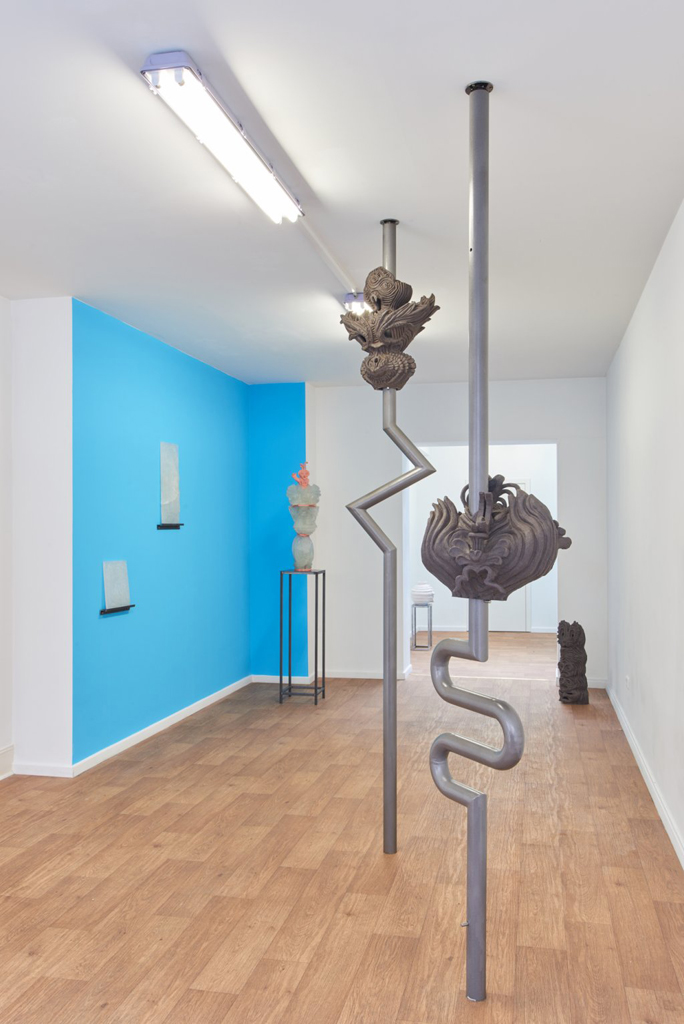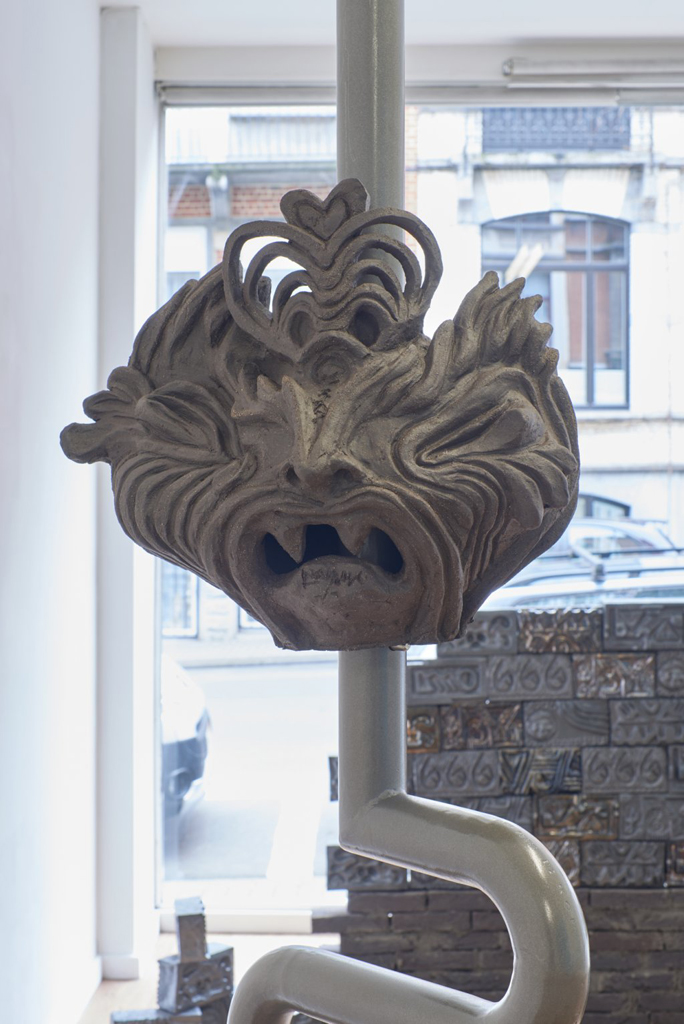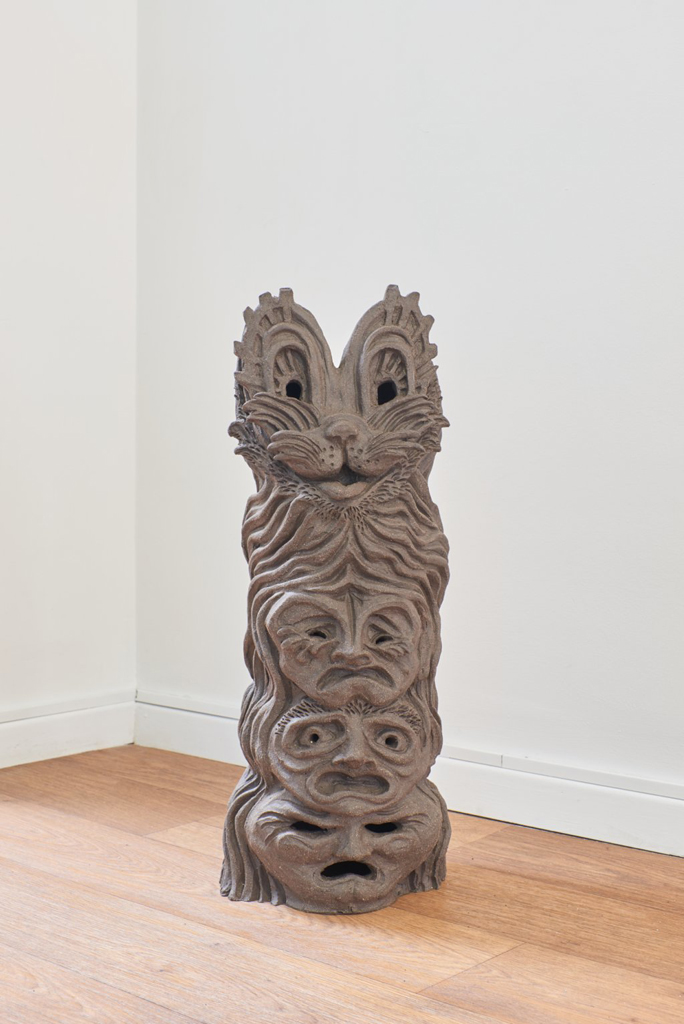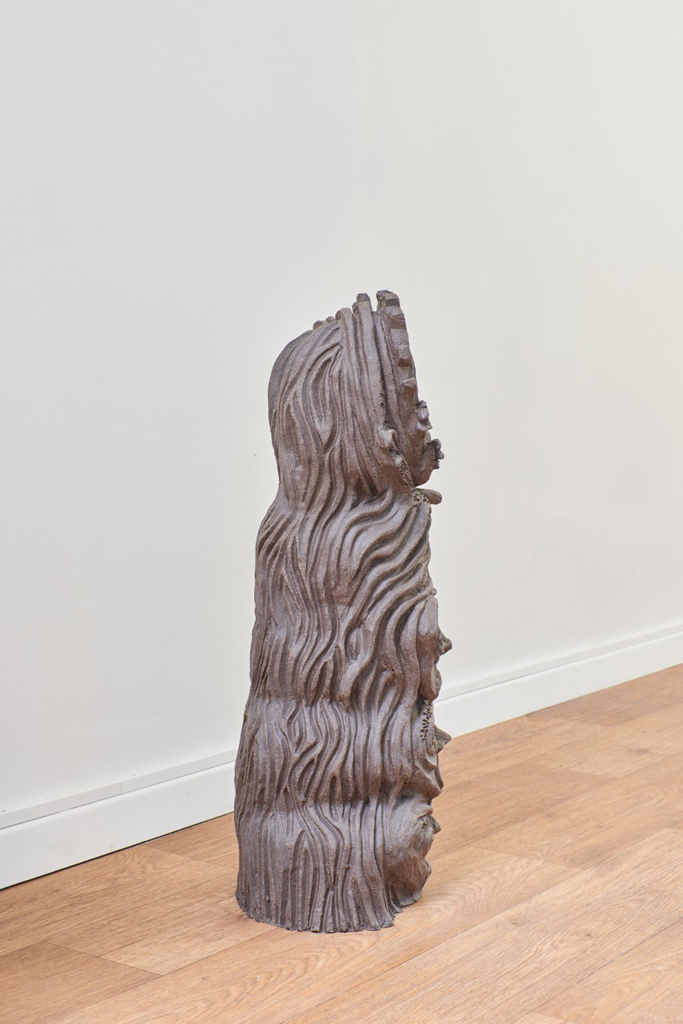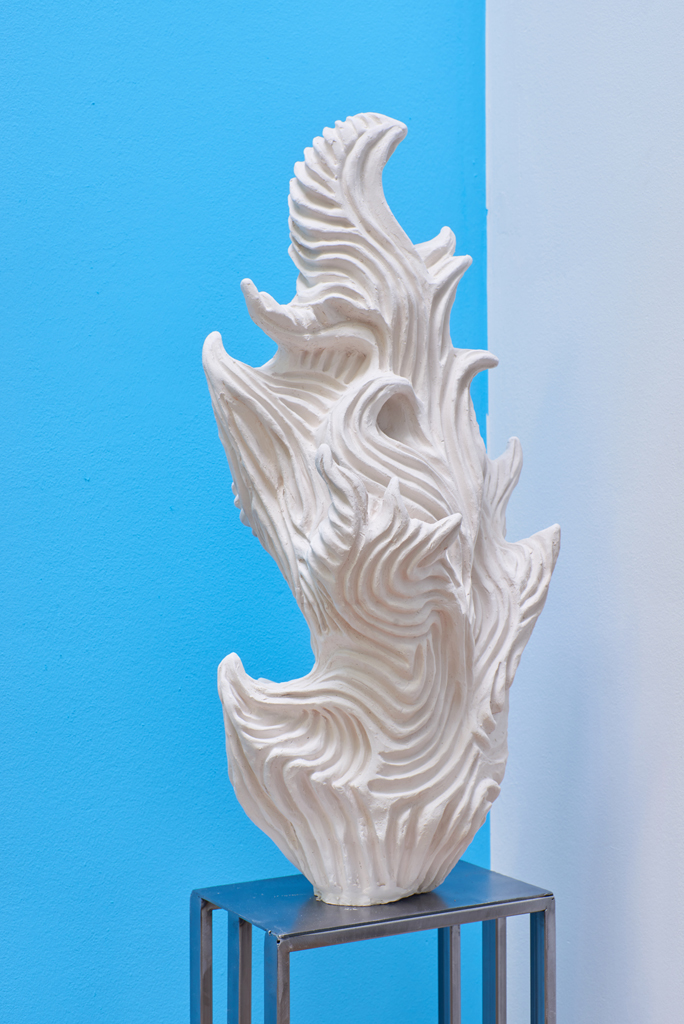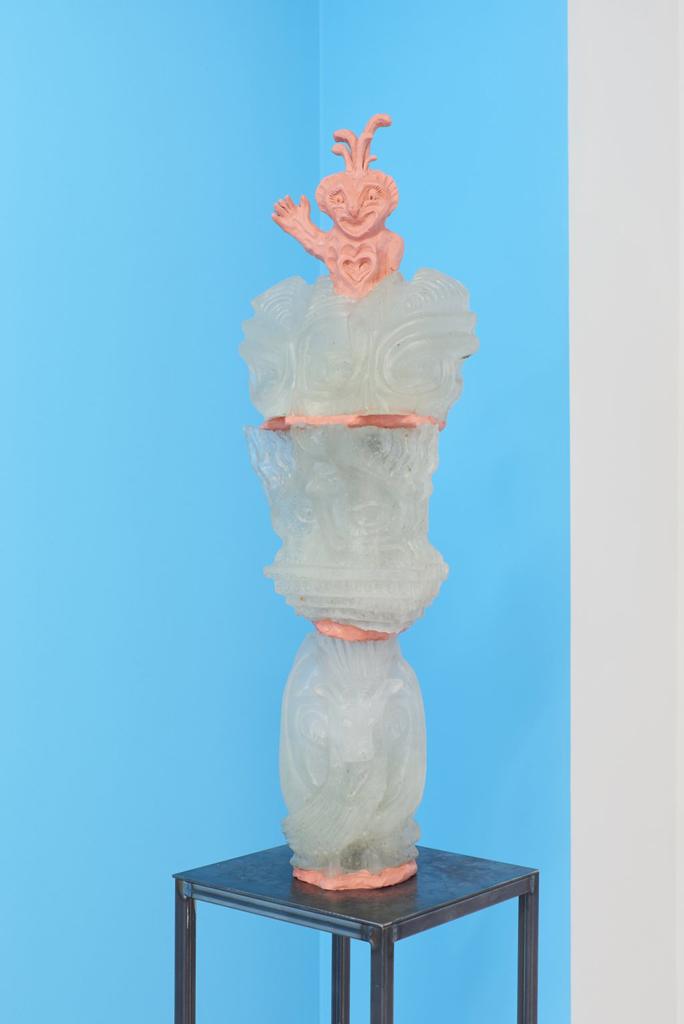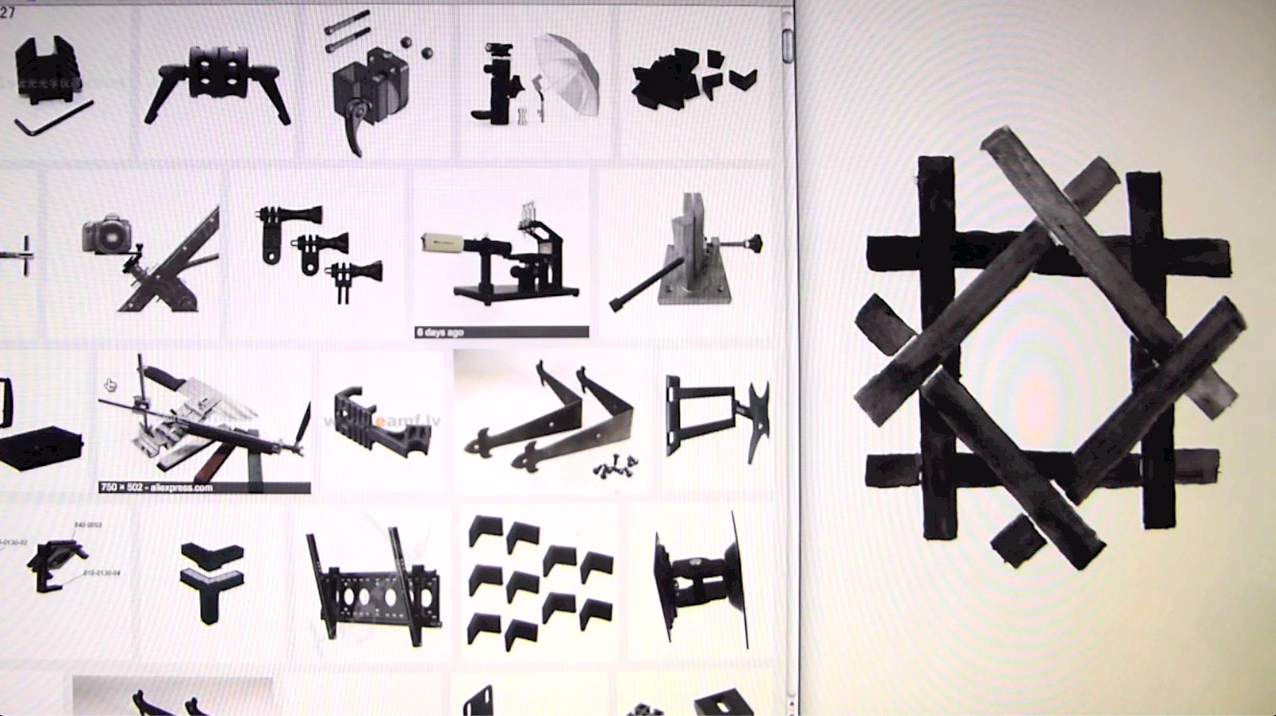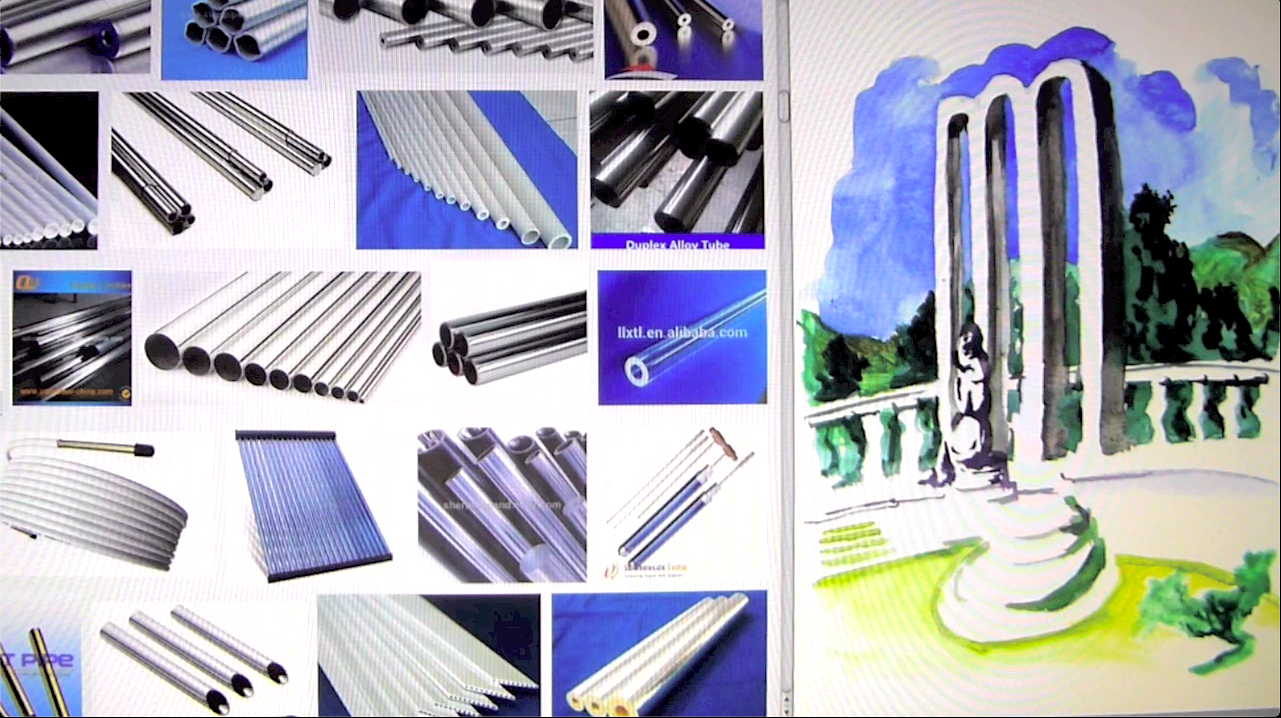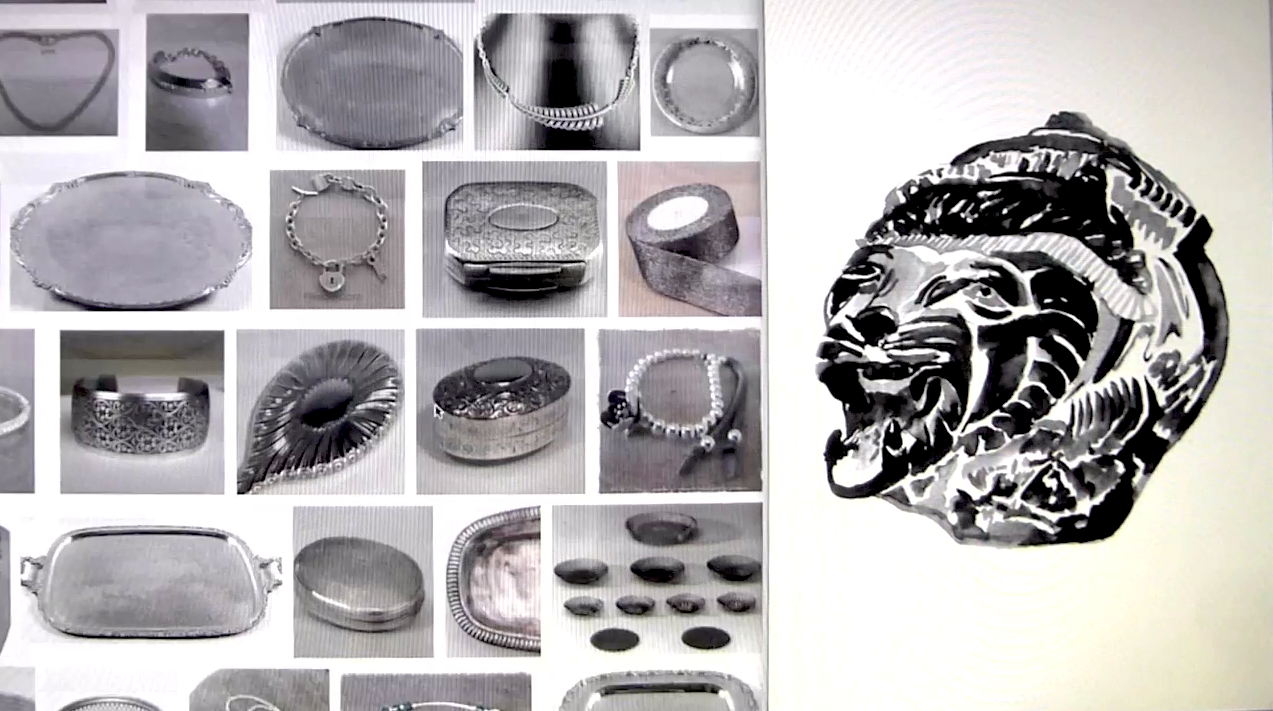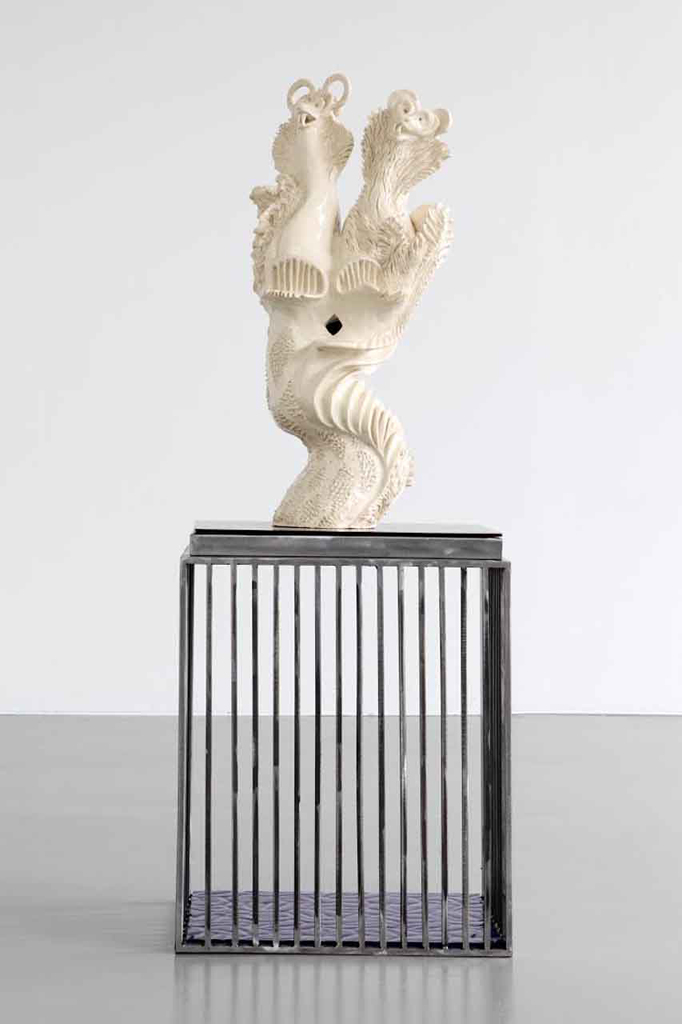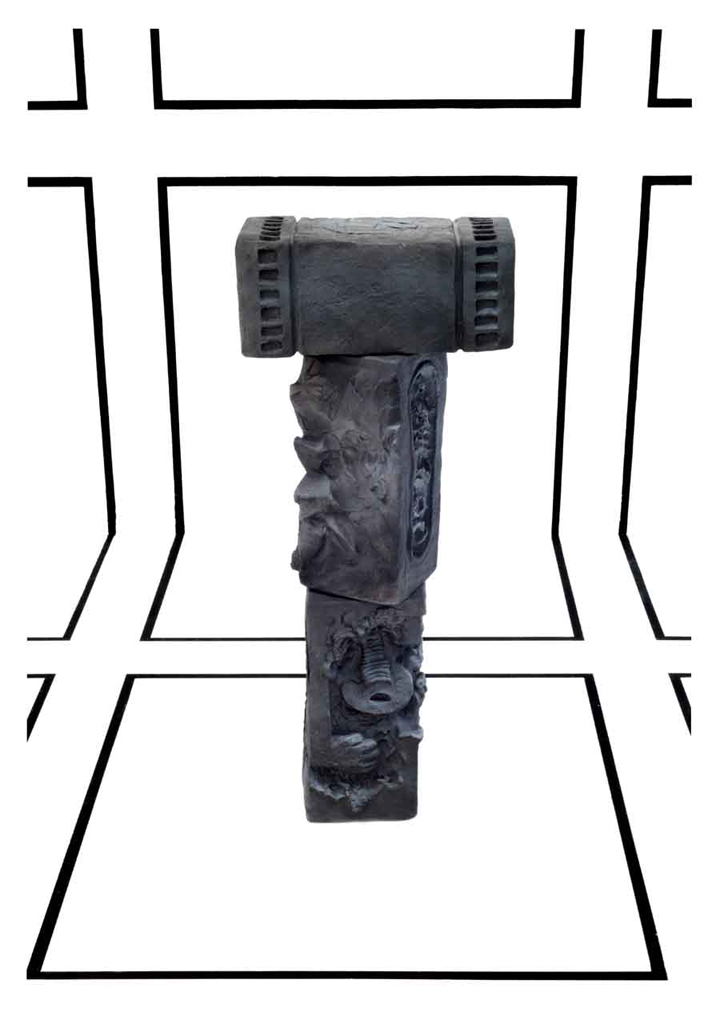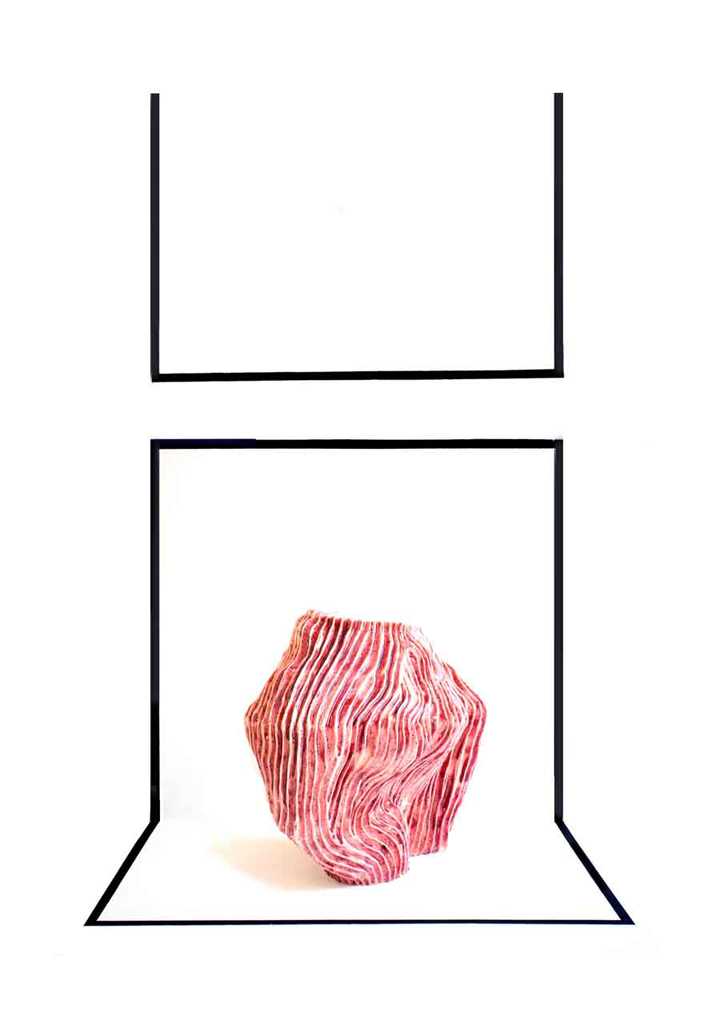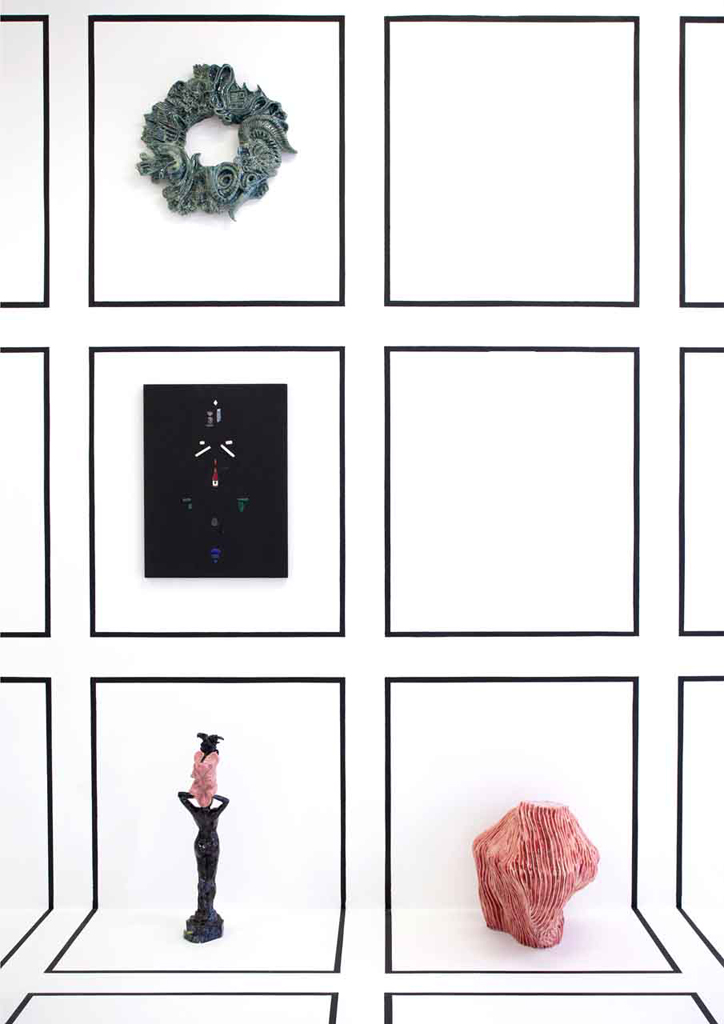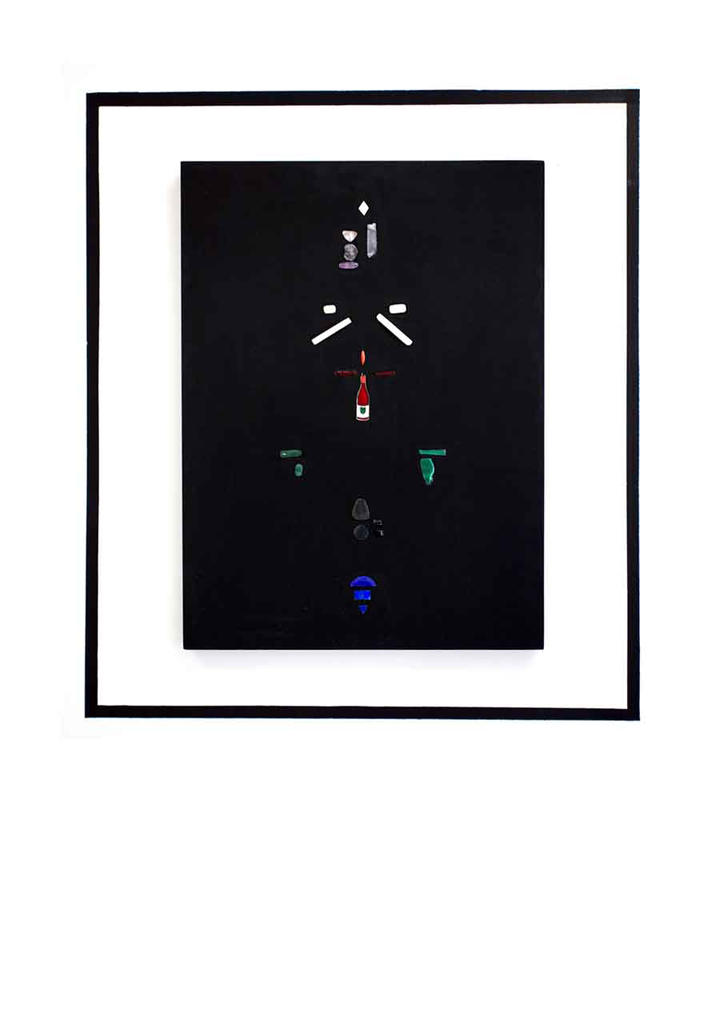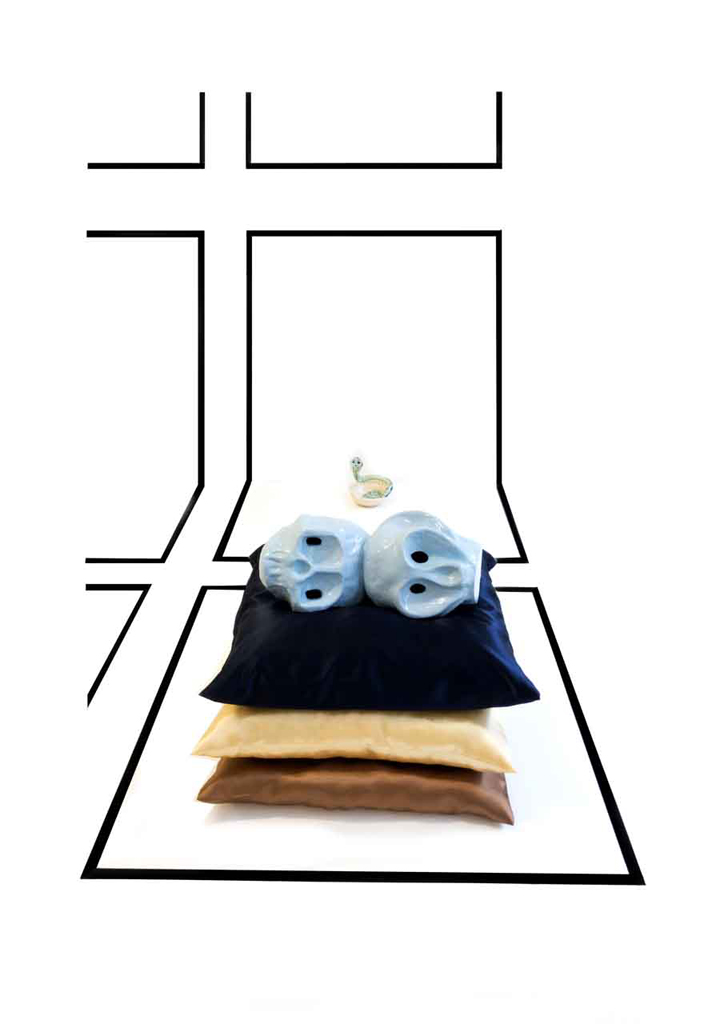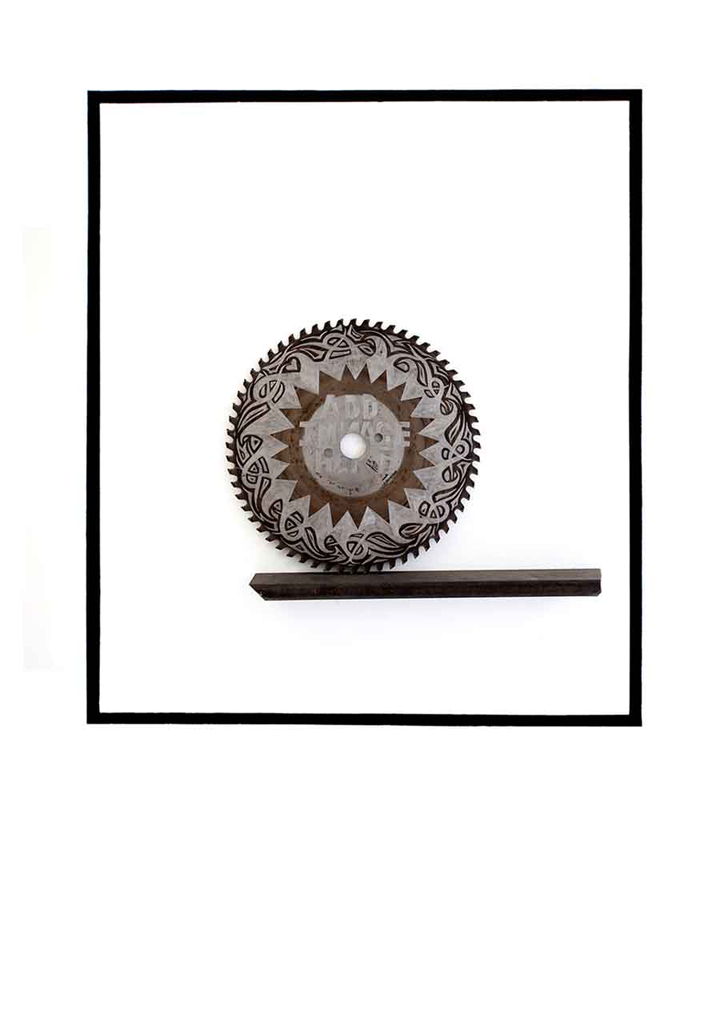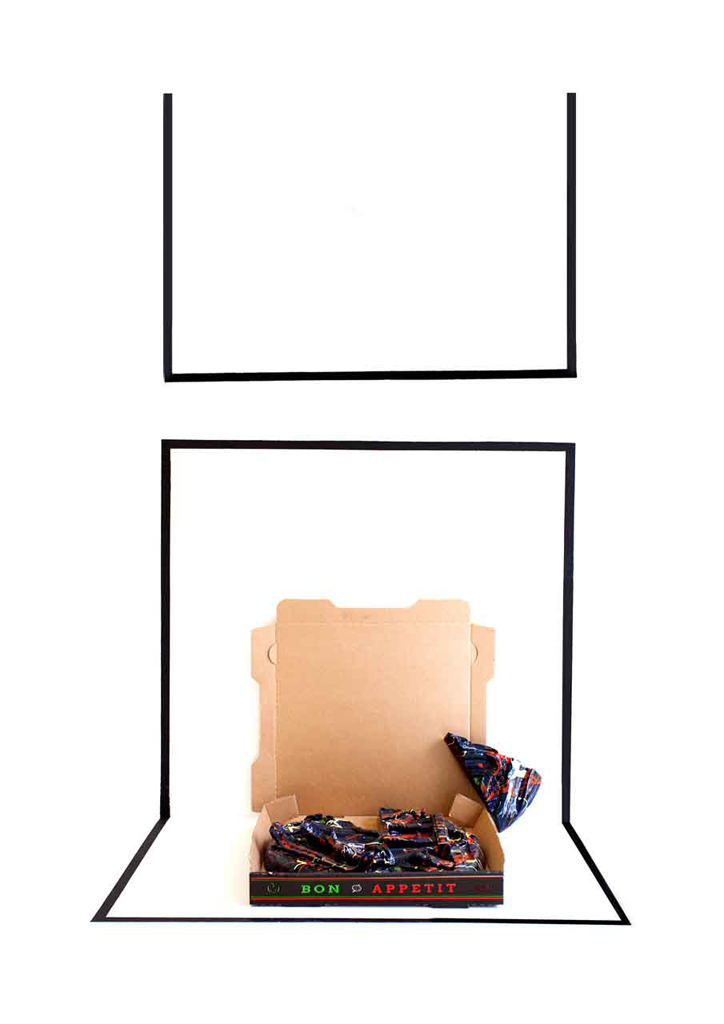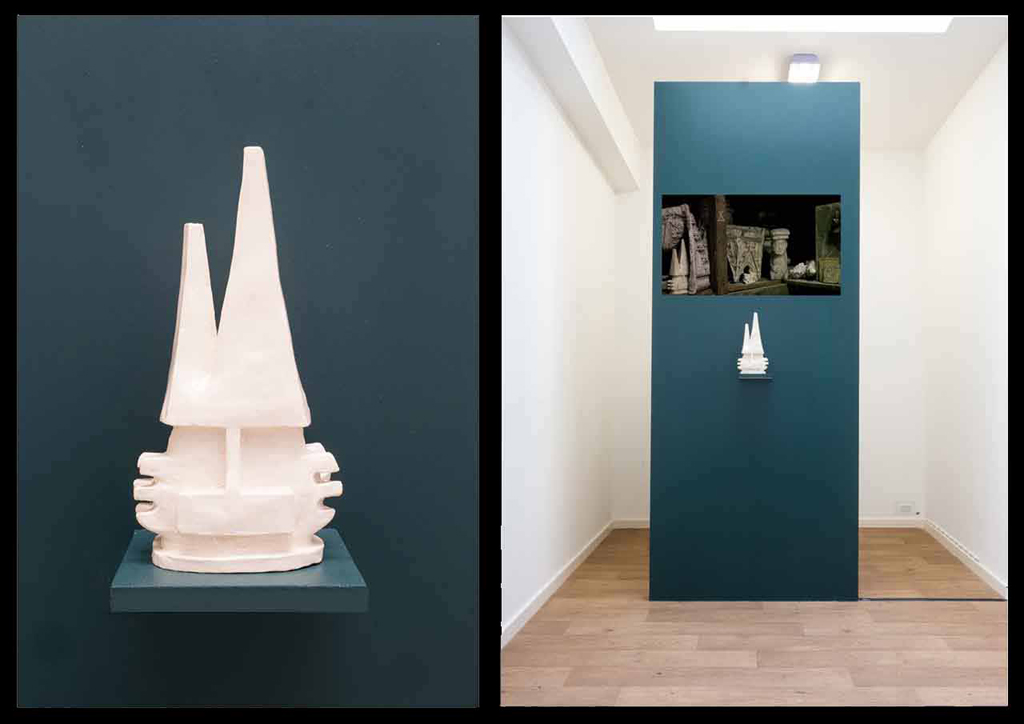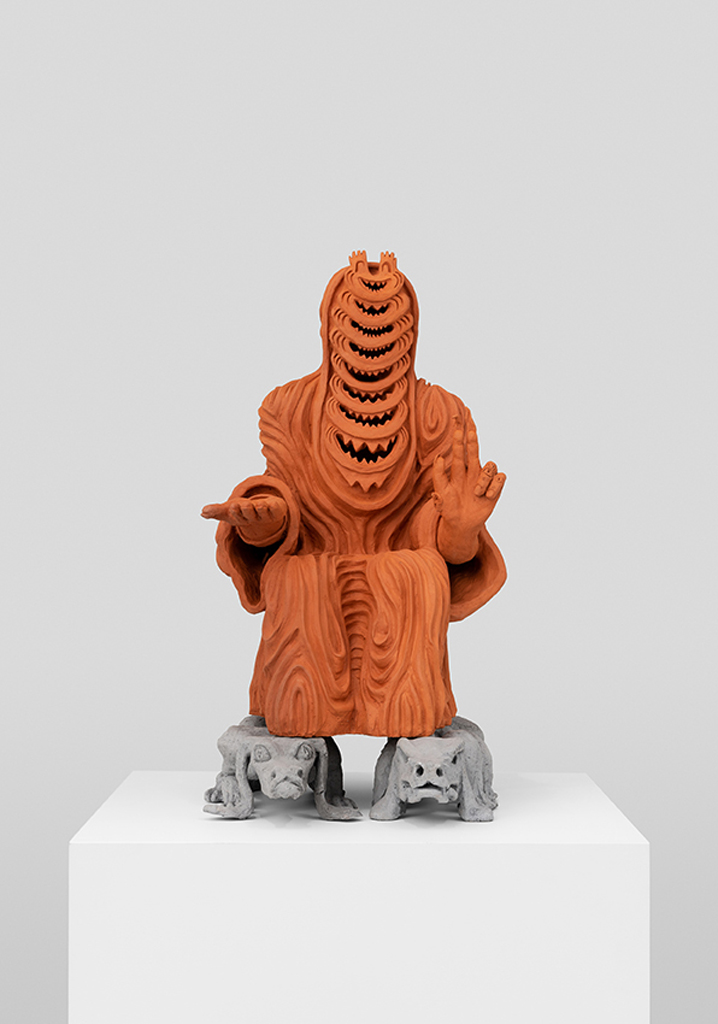
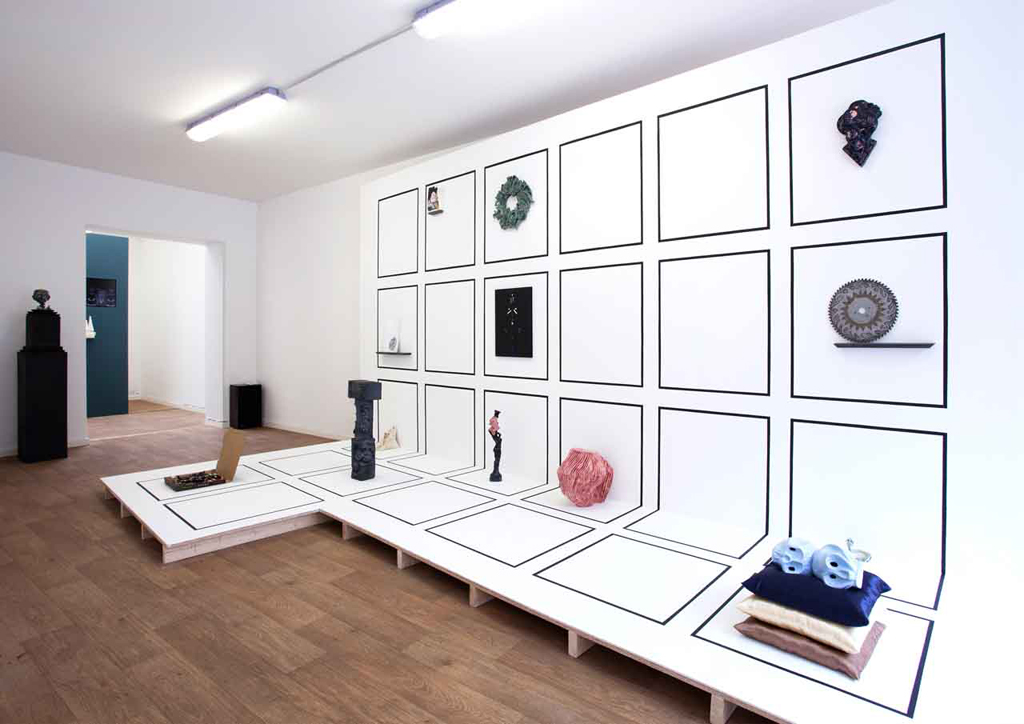
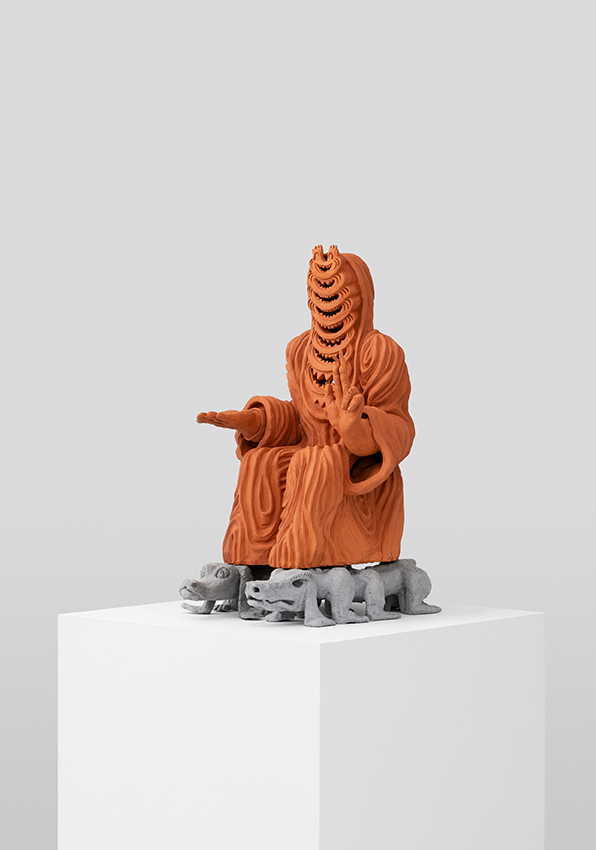
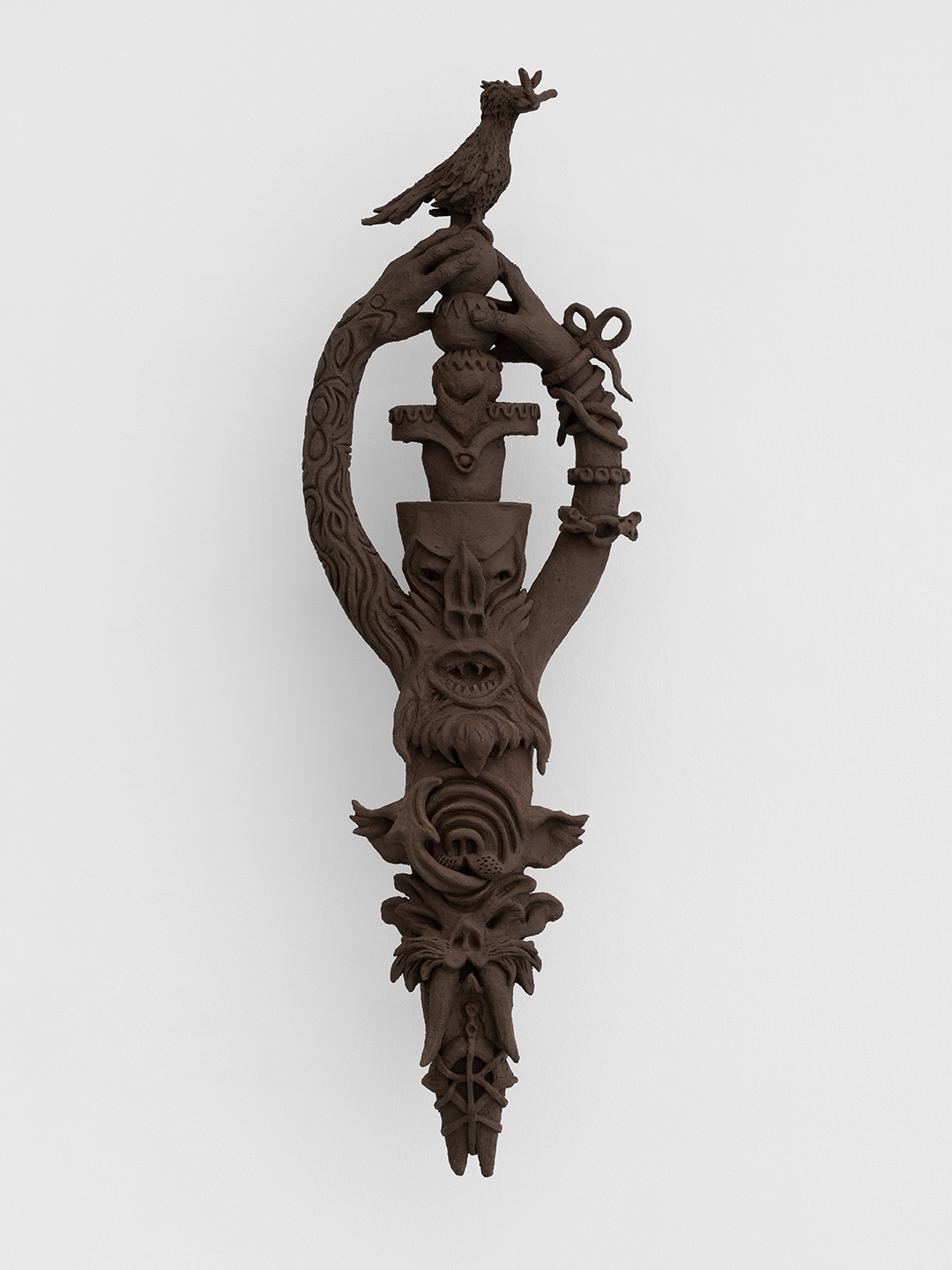
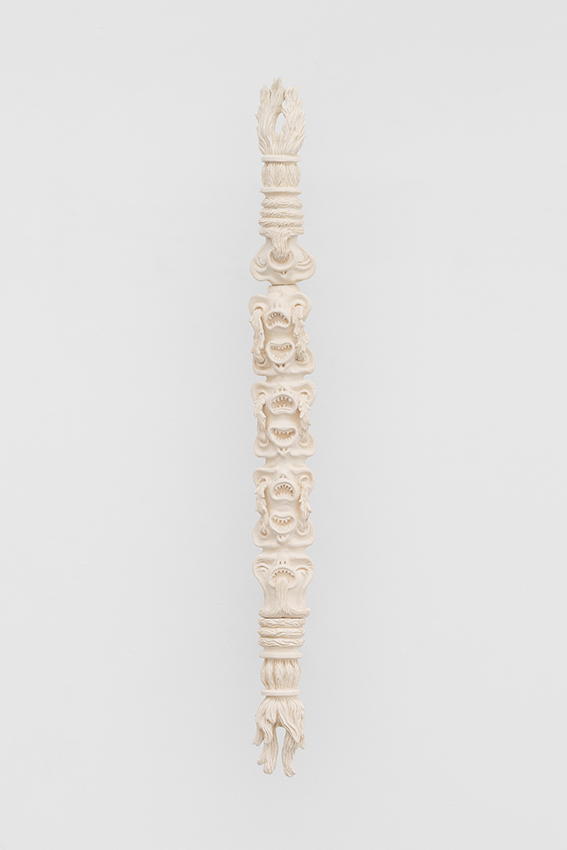
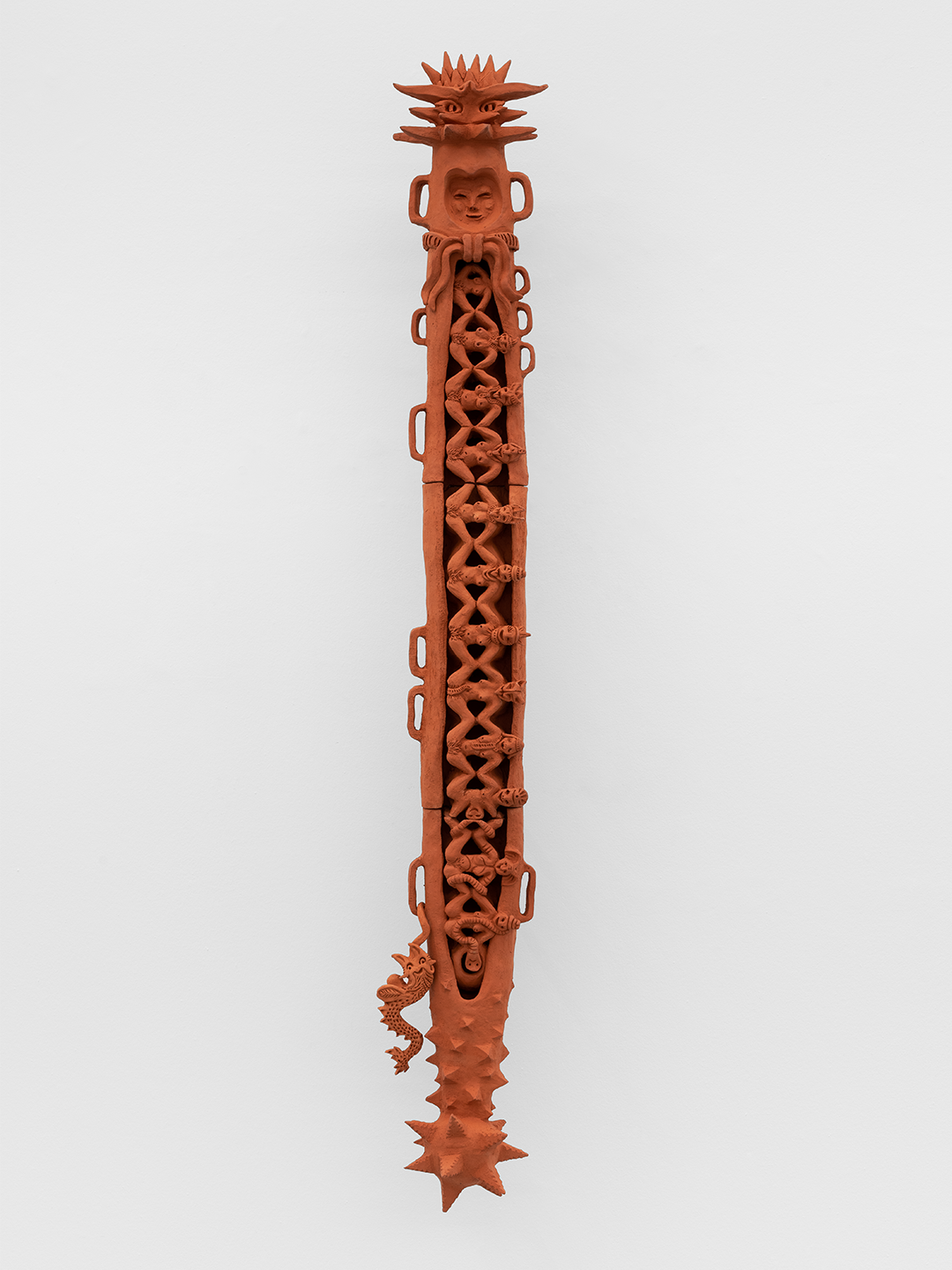
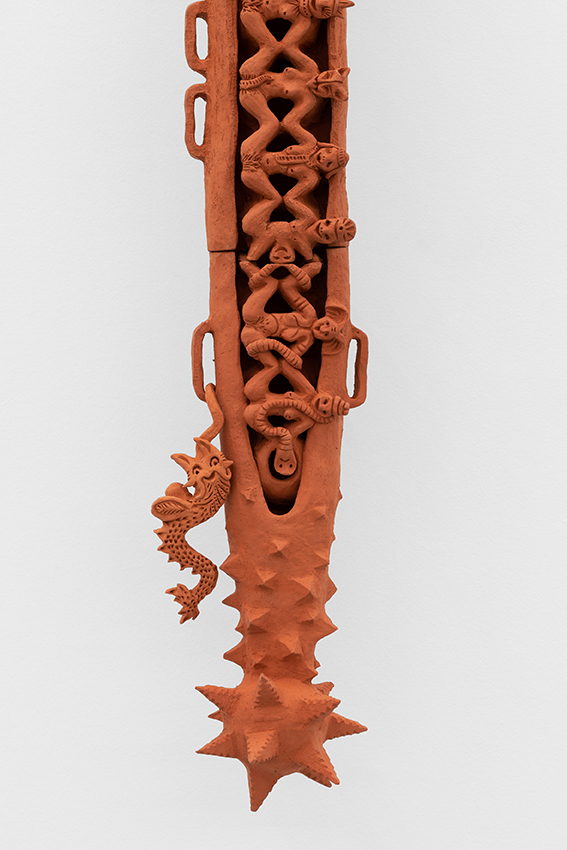
Le combat de Carnaval et Careme at Rodolphe Jannsen Gallery, by
The exhibition brings together works by four artists residing in Belgium, who are, each in their own way, returning to a certain type of figuration in painting and sculpture that is loaded with symbols, allegories and metaphors.
The title of the show is derived from painting by Pieter Brueghel the Elder from 1559, that depicts a symbolic fight between carnival and lent, an allegorical battle between religious devotion and profane enjoyment. At the risk of generalising, the aim of the exhibition is to show works by a young generation of artists, who are, in the tradition of the Flemish primitives and their followers, going back to the portrayal of mystical subjects or allegorical scenes, but in a contemporary context. Often based on theories, texts, or historical examples, their works reveal an interest in the history of art, traditions, science, ornaments, religion, fiction, and so on
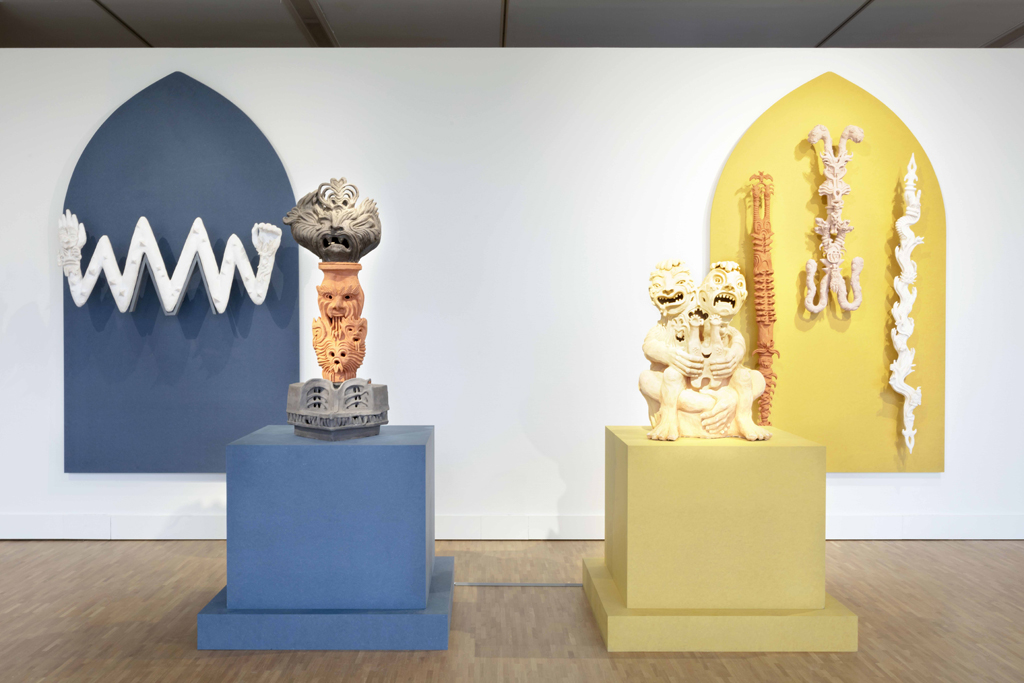
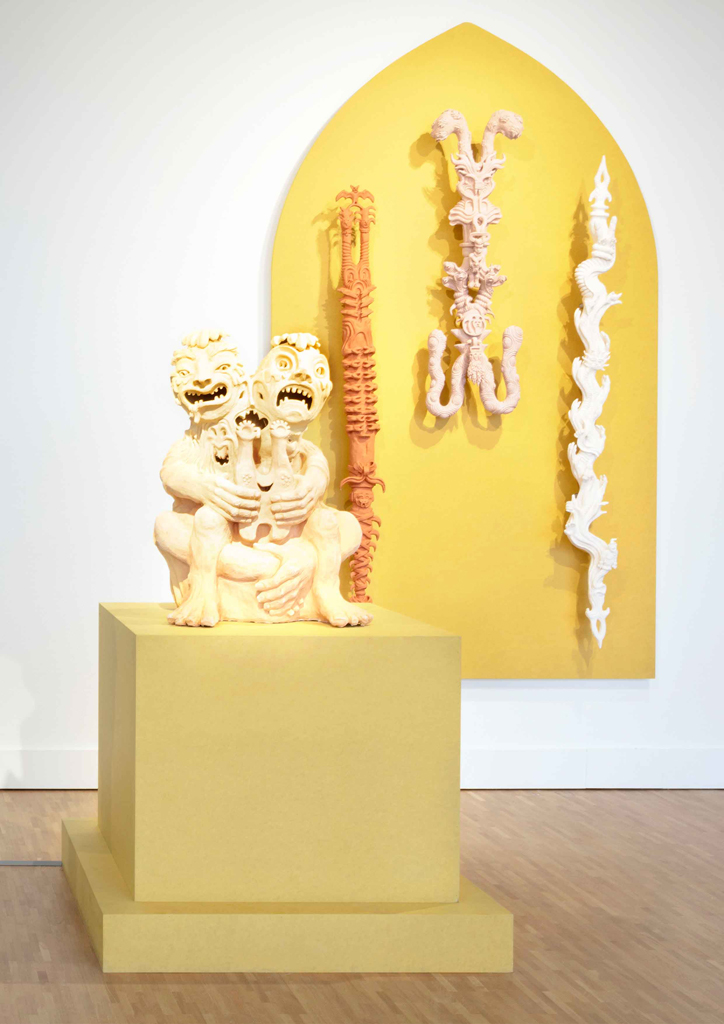
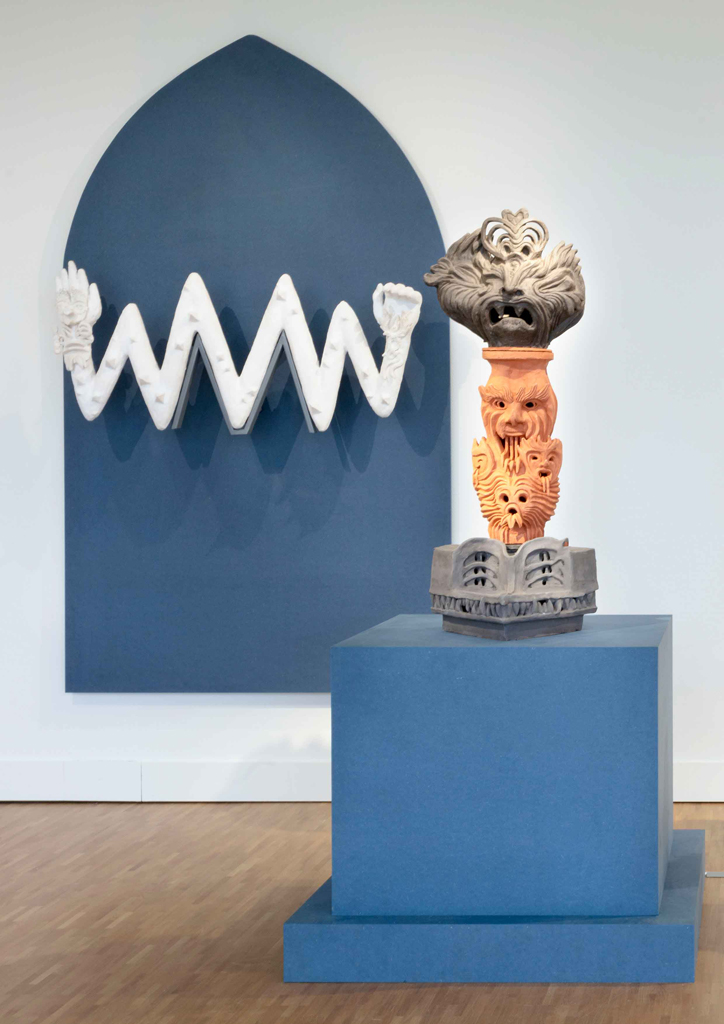
Vordemberge-Gildewart Award , by
Friedrich Vordemberge-Gildewart (1899 - 1962) was one of the first artists to create an entirely abstract body of work. His innovative spirit was akin to that of the artists of De Stijl, the movement he joined in 1925. His name is also attached to a European prize for artists. The Vordemberge Gildewart Award will be presented in The Hague for the first time on Saturday 22 February 2020. The ten nominees are: Salim Bayri, Deborah Bowmann, Bob Eikelboom, Ricardo van Eyk, Eva Giolo, Nadia Guerroui, Sharon Van Overmeiren, Emma van der Put, Dan Walwin and Charlott Weise.
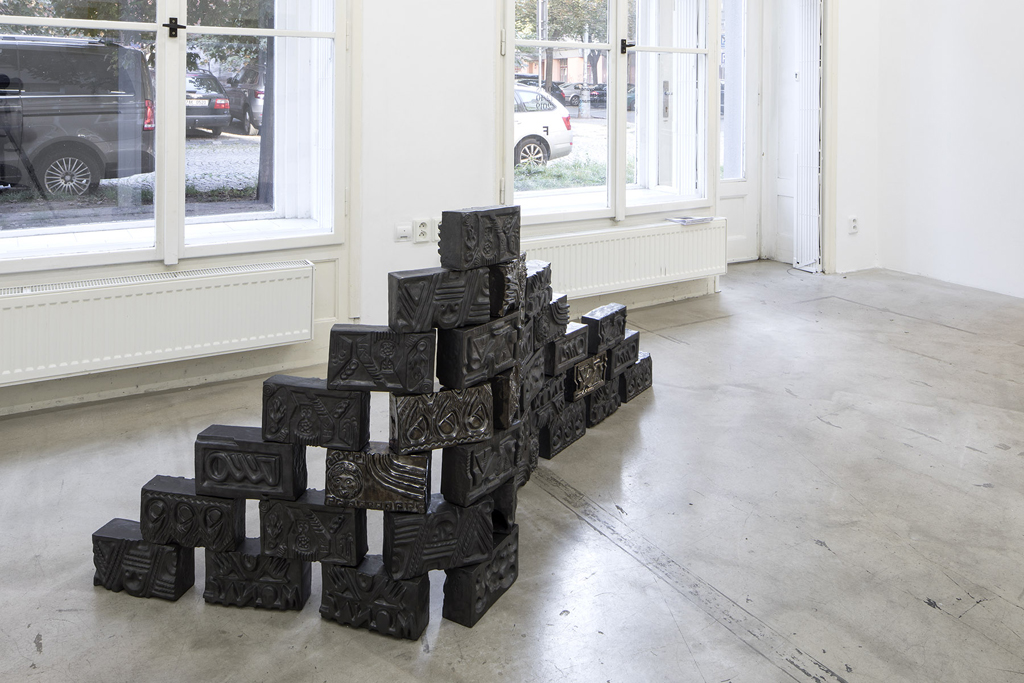
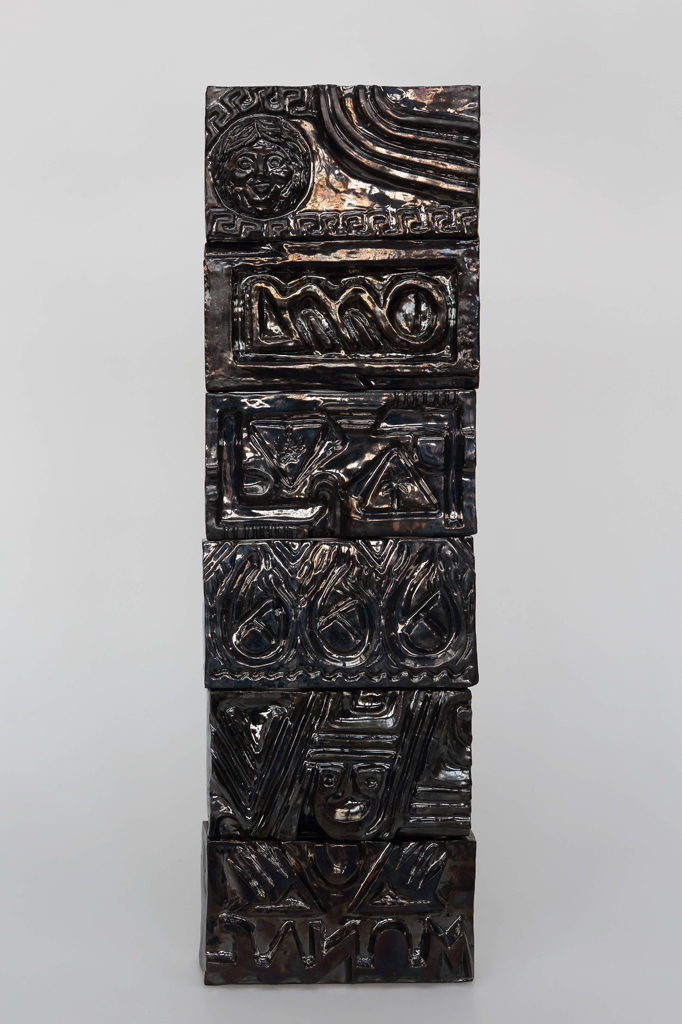
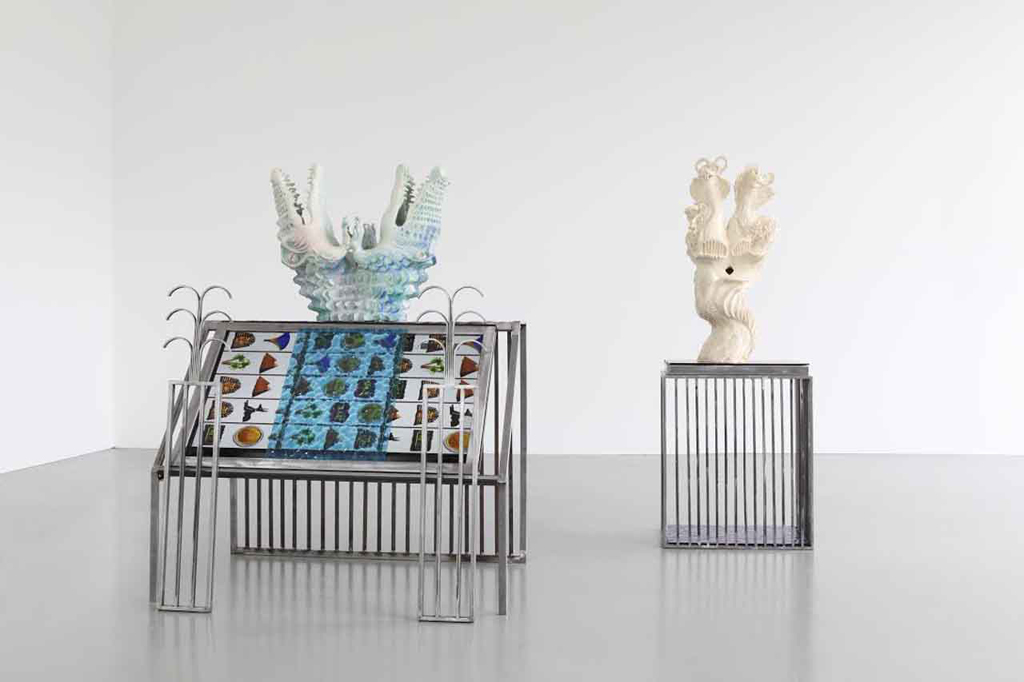
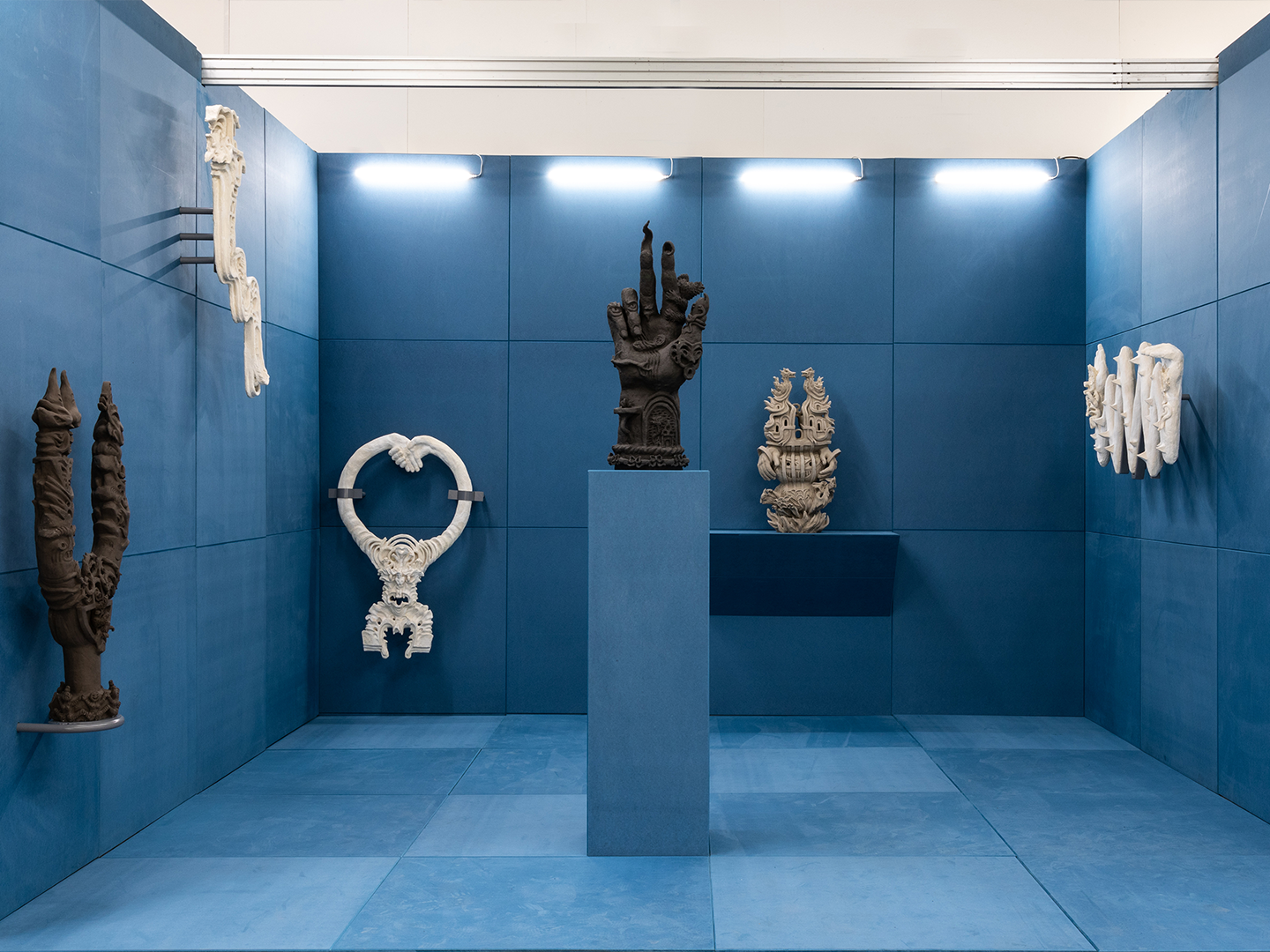

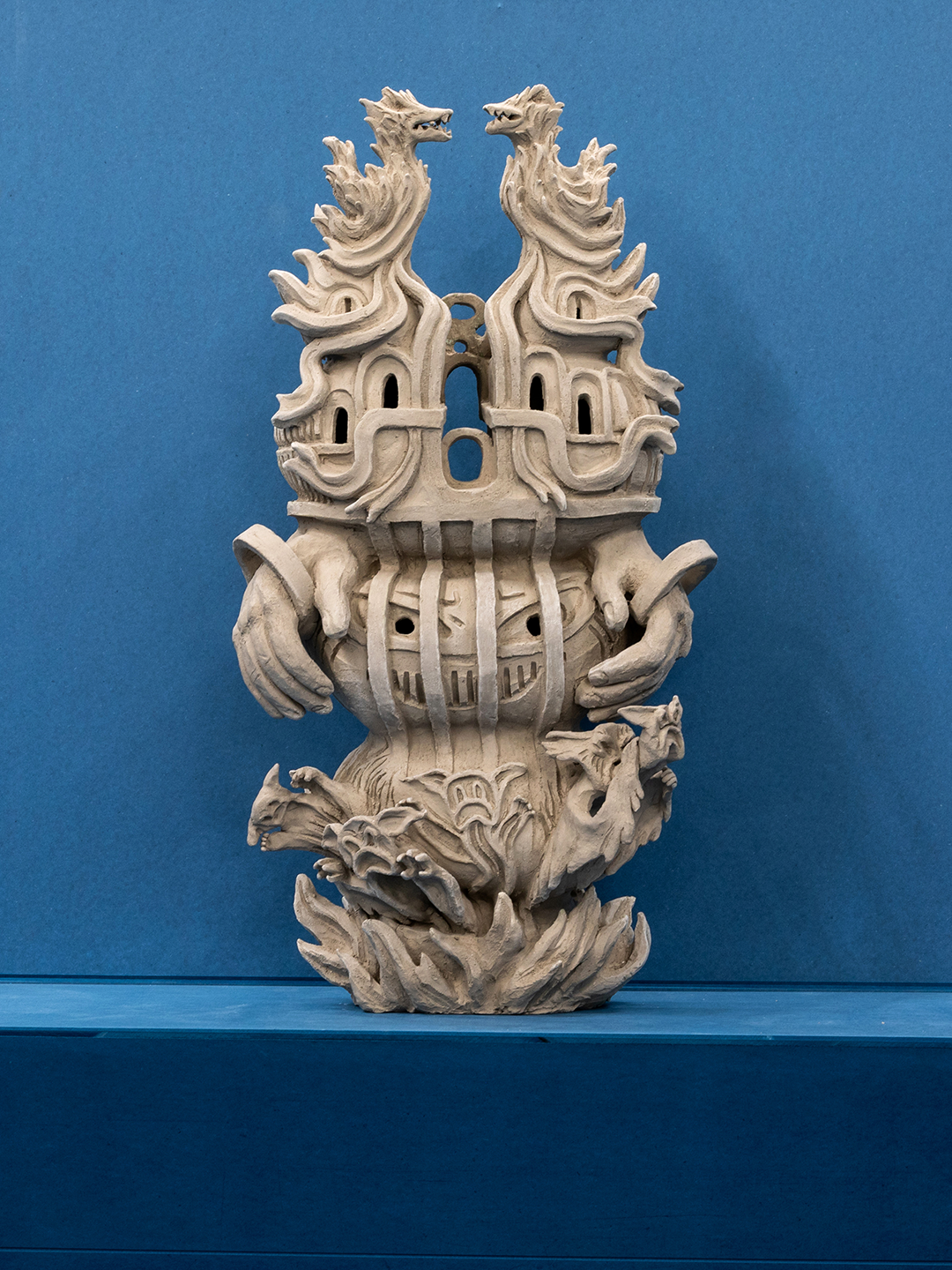


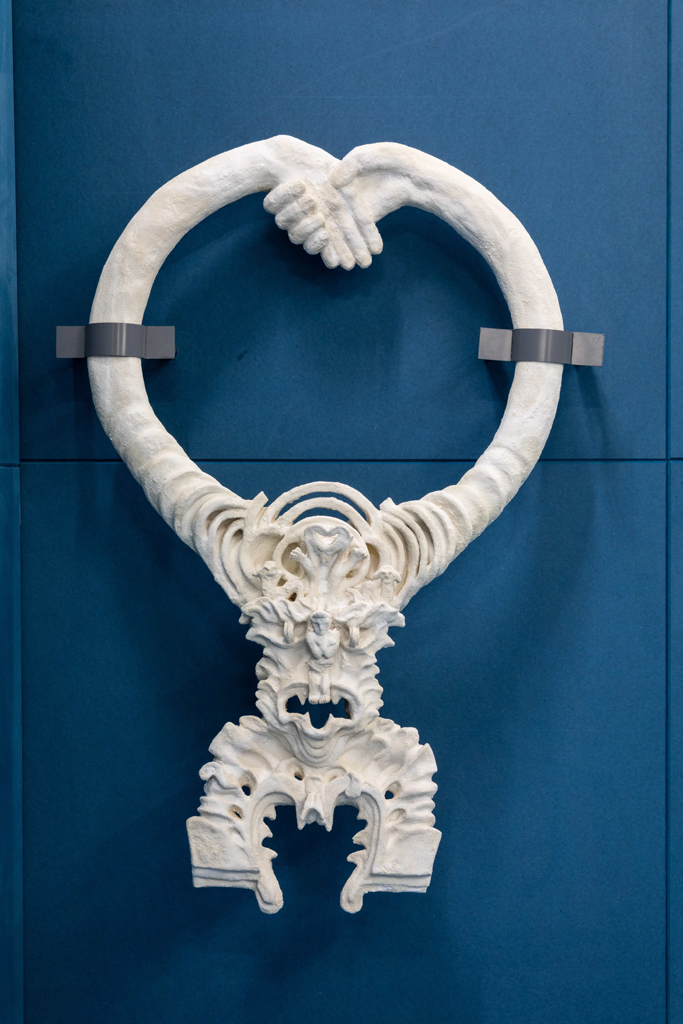
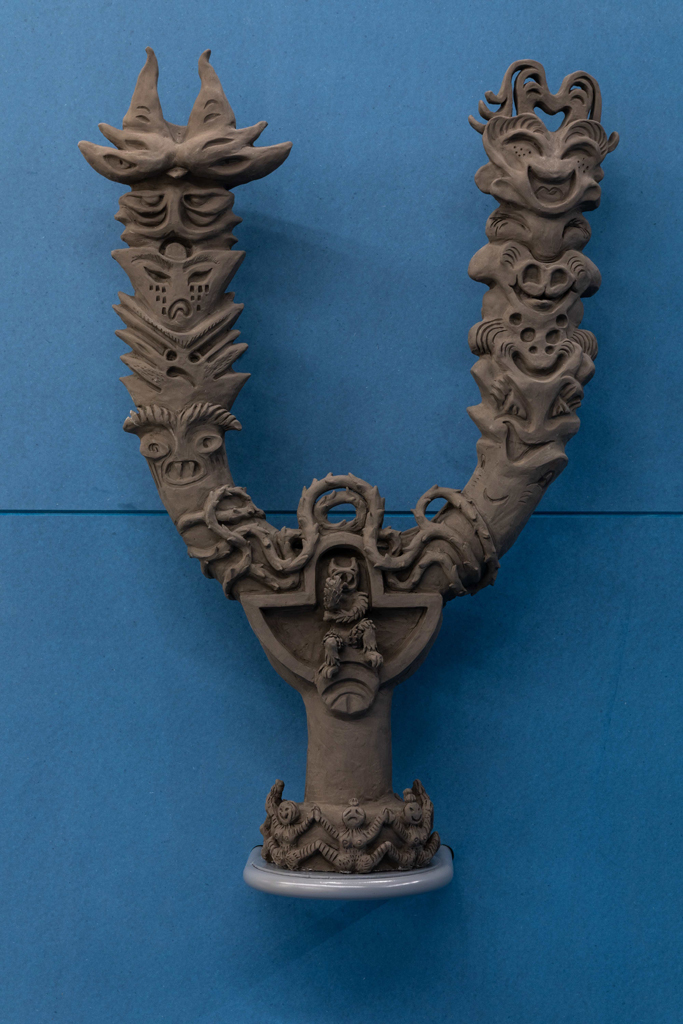
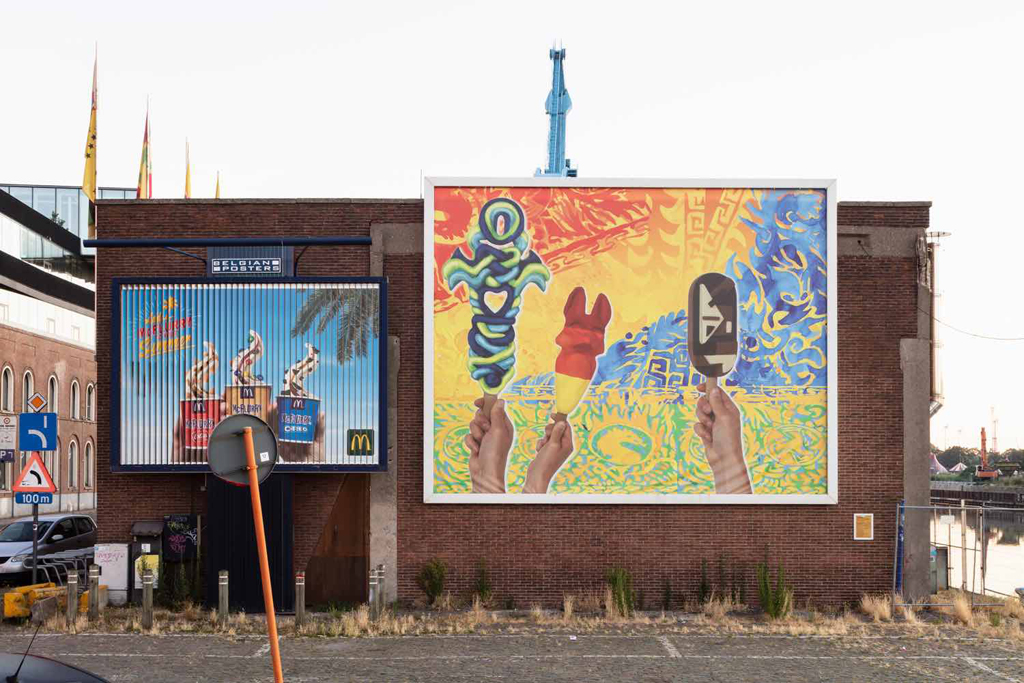
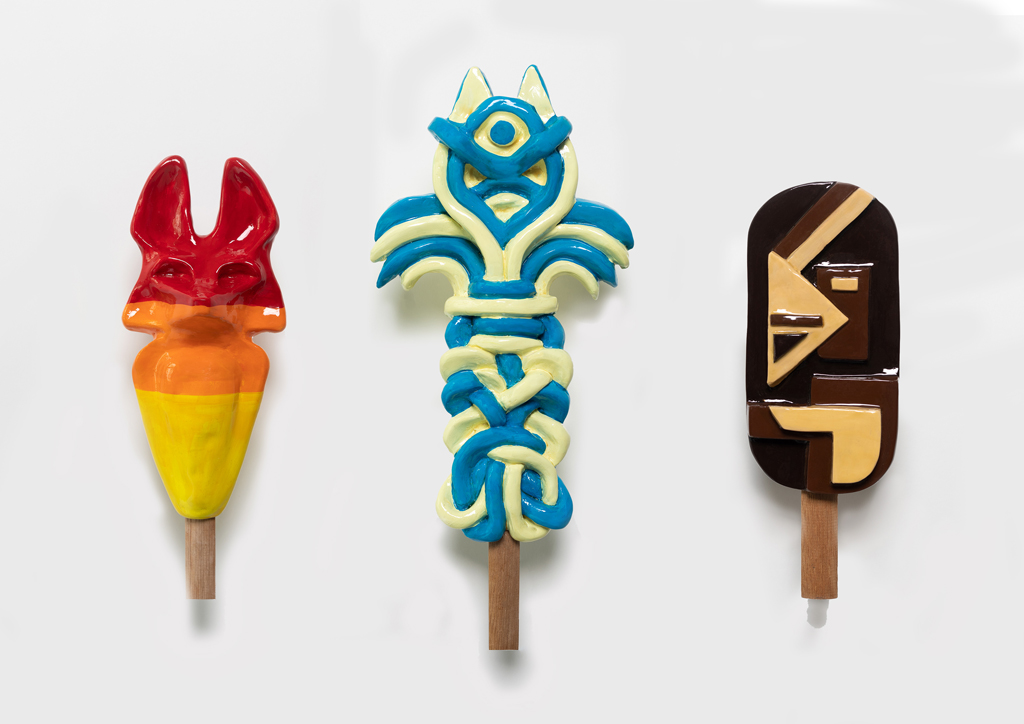
Pop Cycles , by Thomas Caron
Voor de zestiende Billboard Series maakte Sharon Van Overmeiren nieuw werk dat vertrekt vanuit de tentoonstellingsplek – het reclamepaneel – en vanuit het tentoonstellinsmoment – namelijk de zomer. Zoals steeds begon ook hier alles met tekeningen, waarin verschillende ijsjes opdoken, als een typische zomerse vorm. De kunstenaar ontwierp uiteindelijk drie vormen waarin tal van hoge en lage referenties terugkomen.
De duidelijkste referentie die je ziet als je naar de drie vormen kijkt is dus die van ijsjes. De algemene vorm- en kleurcombinaties van de beelden verwijzen ontegensprekelijk naar een Magnum, een Raketijsje en een Twister – drie zomerse klassiekers die iedereen kent uit zijn of haar kindertijd. Dit wordt nog versterkt doordat de kunstenaar deze tekeningen omzet naar tastbare sculpturen. Daarnaast vervormt Van Overmeiren de ijsjes ook onmiddellijk, door er historische referenties aan toe te voegen.
Zo is de Magnum opgebouwd uit minimale, geometrische elementen die verwijzen naar de abstract-geometrische stijl die het Duitse Bauhaus in de eerste helft van de twintigste eeuw kenmerkt. Het Raketijsje refereert in vorm dan weer sterk aan Anubis, een Oud-Egyptische god van de dood die traditioneel wordt voorgesteld als jakhals of een mens met het hoofd van een jakhals. De vorm en kleur van de Twister tenslotte verwijzen naar de Keltische cultuur die meer dan tweeduizend jaar geleden dominant was in grote delen van Europa.
Van Overmeiren speelt verder met de ijsjesreferentie door de manier waarop ze deze ceramische sculpturen presenteert: in de hand gehouden zoals op de traditionele Ola-panelen die overal langs de kunst te zien waren. Zelfs haar geschilderde achtergrond refereert naar de Ola-ijsjes van weleer. Maar wanneer je beter kijkt zie je ook hier tal van referenties, van Dante’s Vagevuur tot het iconische Mortal Kombat logo uit de jaren negentig.
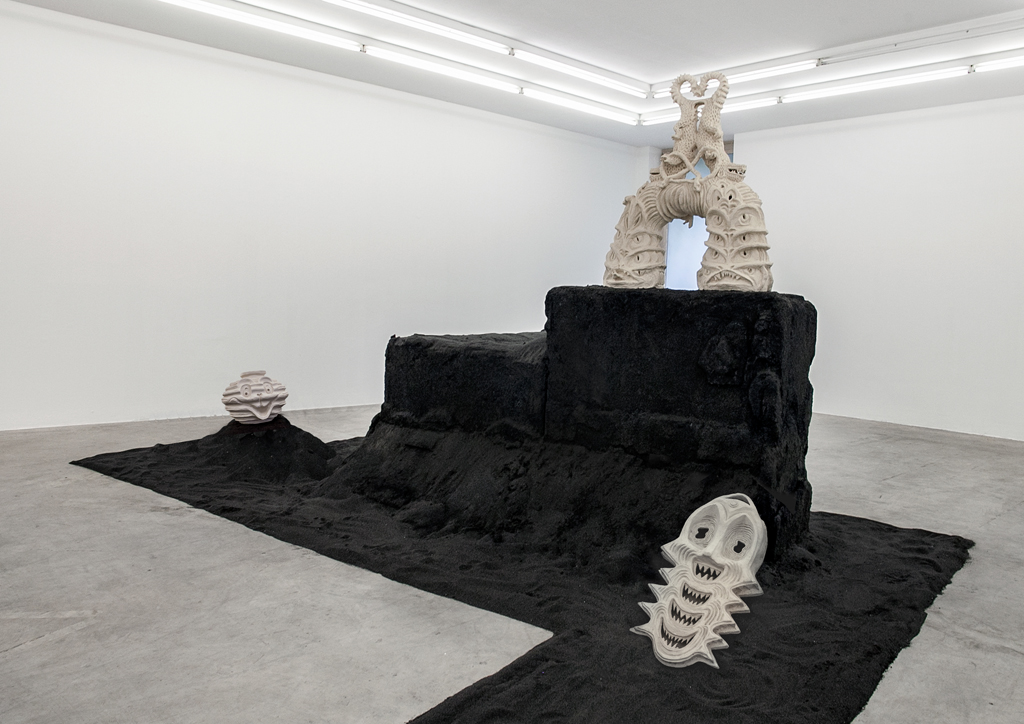
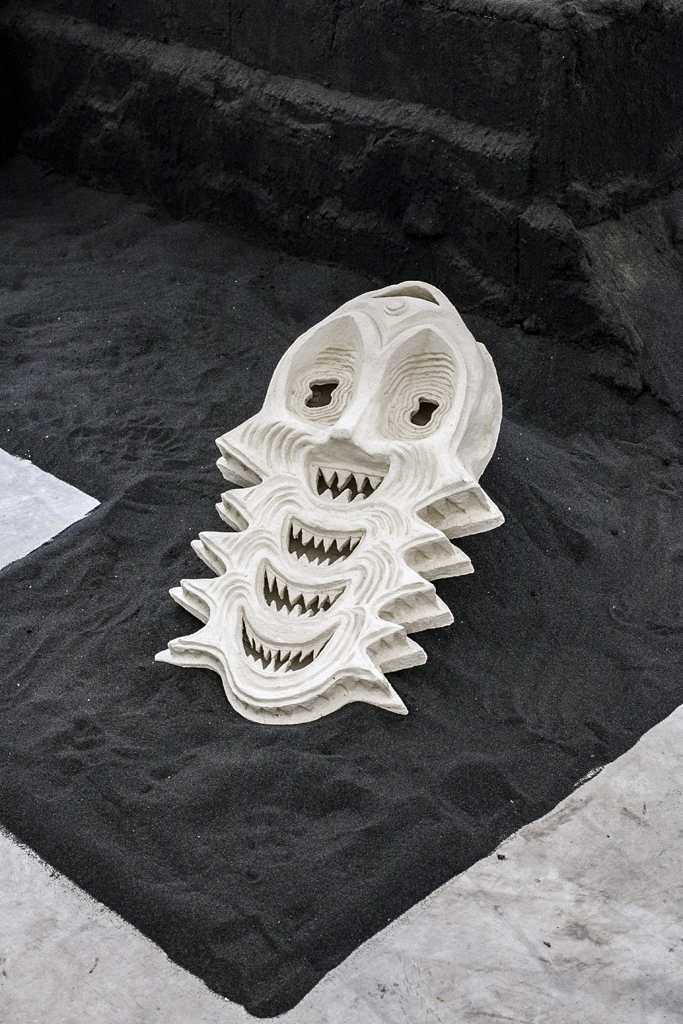
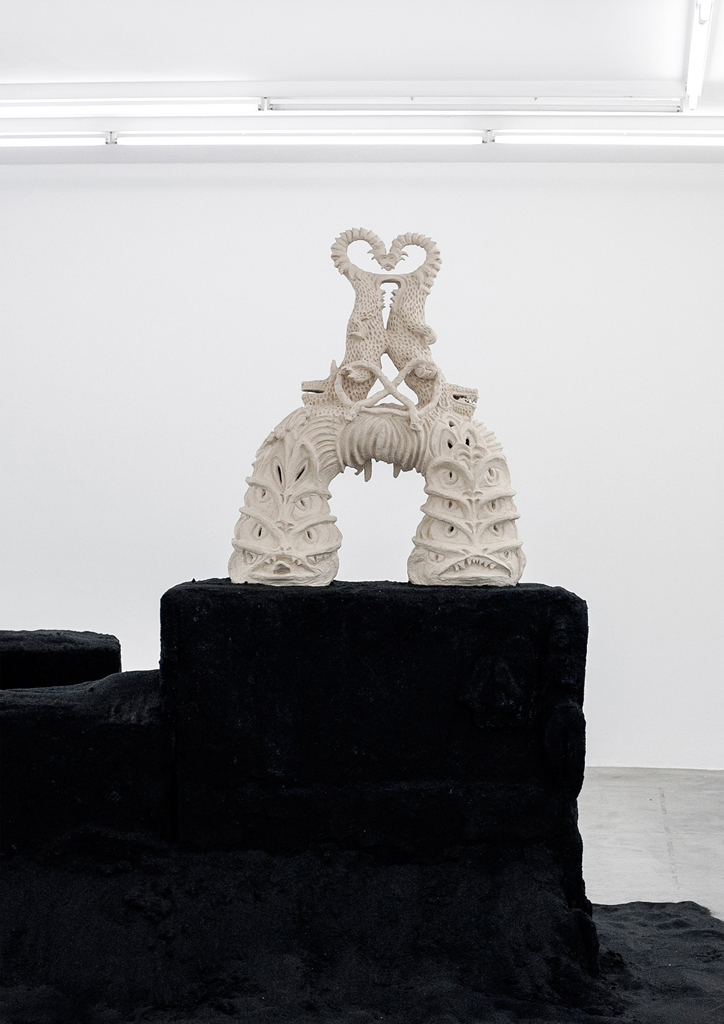
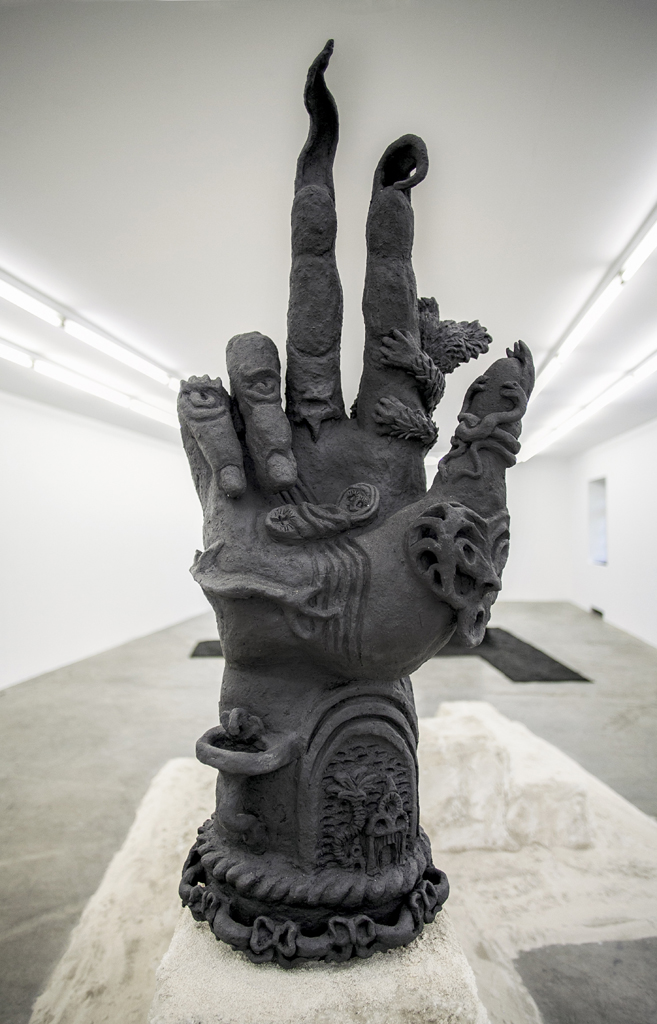
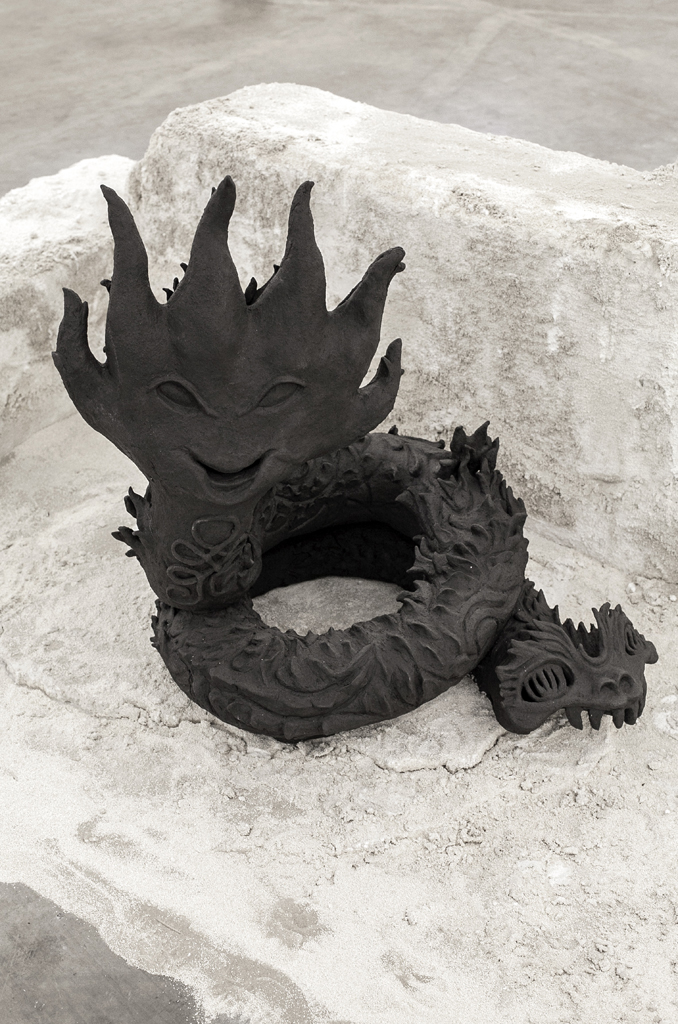
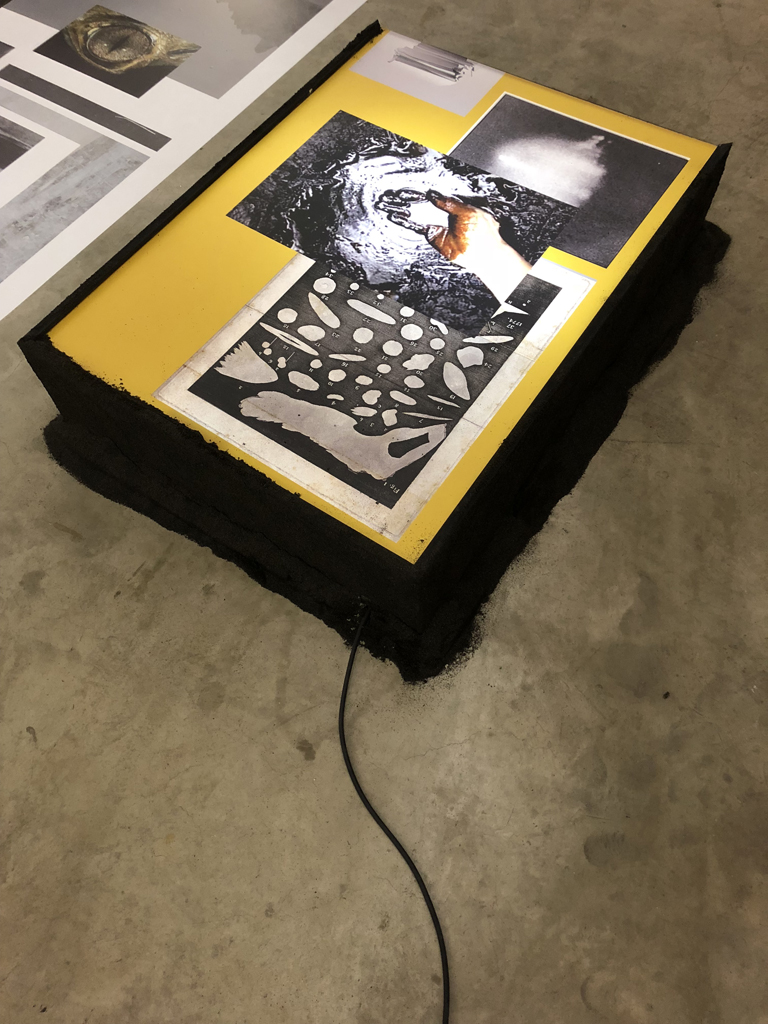
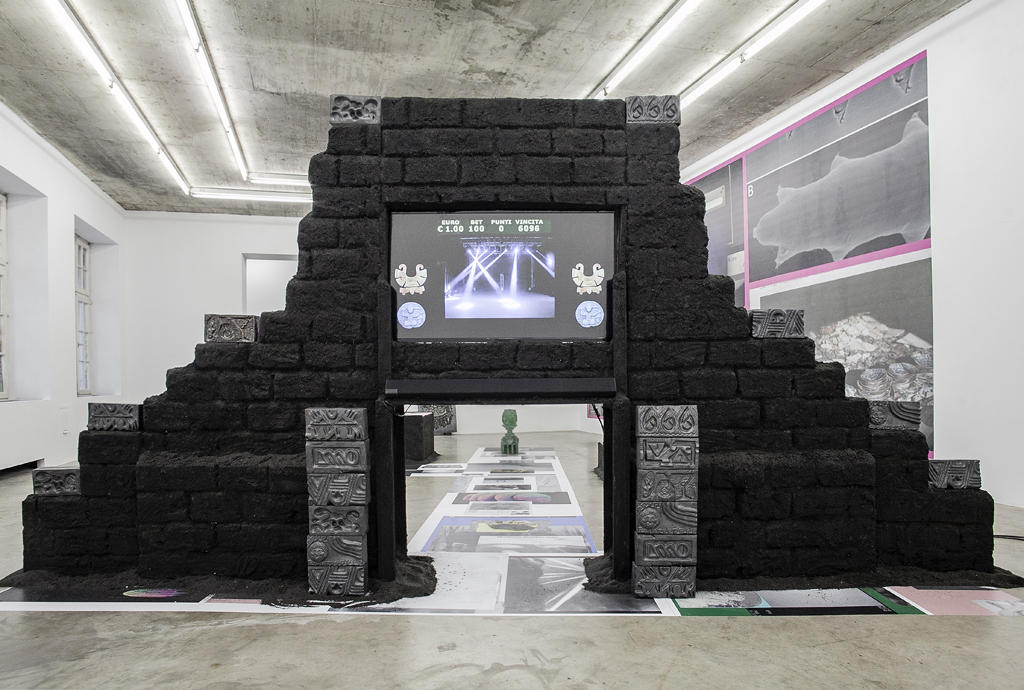
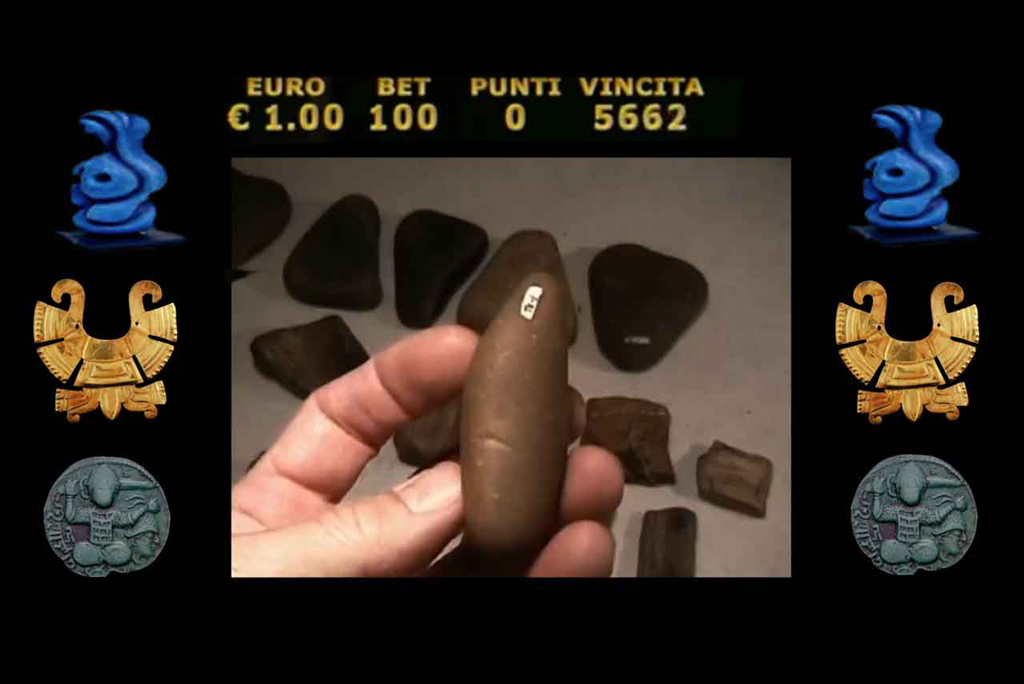
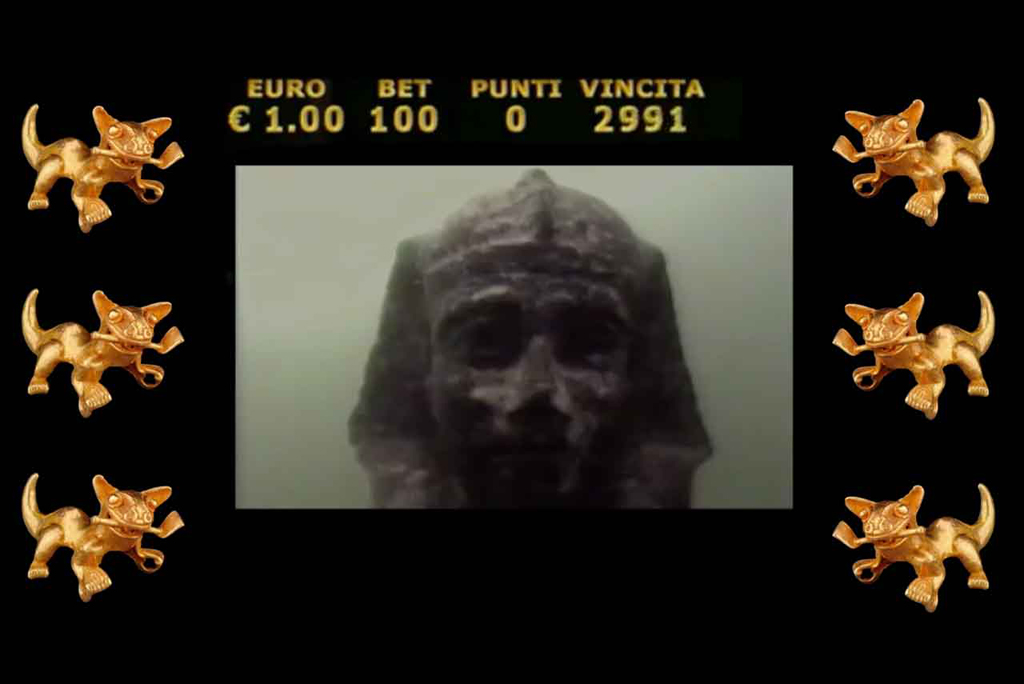
Time Curves Like A Prezel, by Maurice Funken
Entitled Time Curves Like A Pretzel van Overmeiren presents new works in a site-specific installation at the Kunstverein.The exhibition is a collaboration with Joke Van Den Heuvel and reflects upon the idea of living in post-apocalyptic times. A steady multimedia-based superfetation of images and news has left behind a confused society. It is sealing itself off from the media, distrust and disclaimer replace the need for information and knowledge. In an age of fake news scientific facts as well as past ist constantly questioned. In this stage of denial emotions replace facts, projection replace knowledge, objects replace anticipationsSharon van Overmeiren captures this transformation in her fictional sculptures, whose oftentimes animalistic nature betimes reminds of depictions of totems. Similar to an artifact the works exist in past, present and future at the same moment. In the process the exhibition room becomes the site of an archaeological excavation, whose scientific esthetic connotation is reinforced by the use of photographical prints by Joke Van Den Heuvel, which can be observed throughout the exhibition. The uncovered and henceforth documentary charted objects are tangent on a stress field made up between perception, ancestry and civilization, always at variance and continuously asking, in a search of origin and meaning, incessant and inherent in all things.
